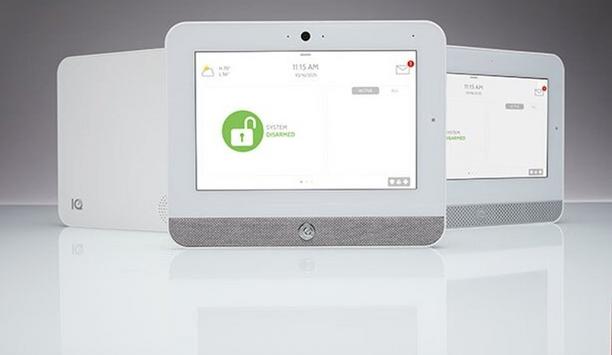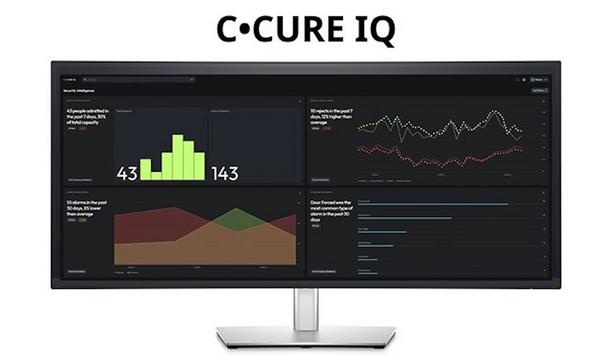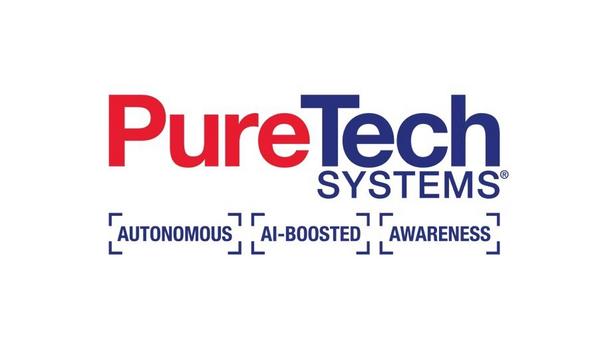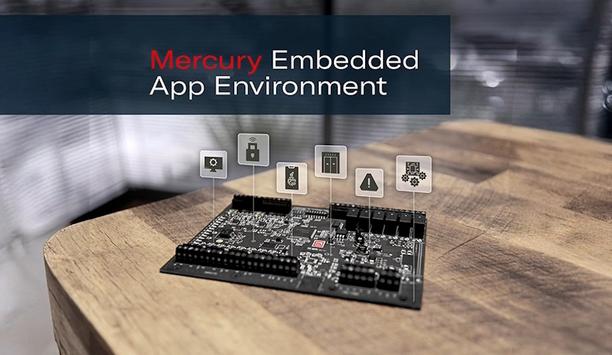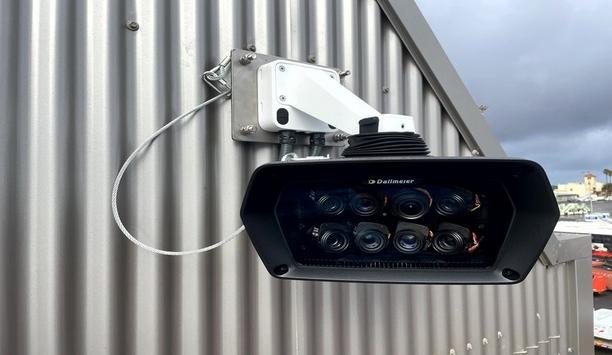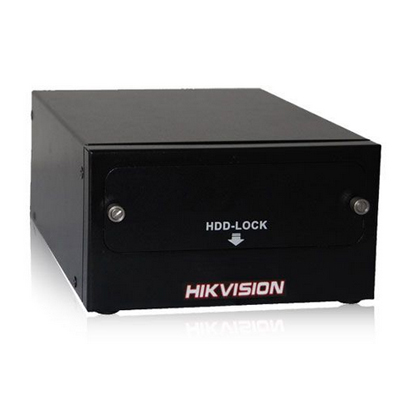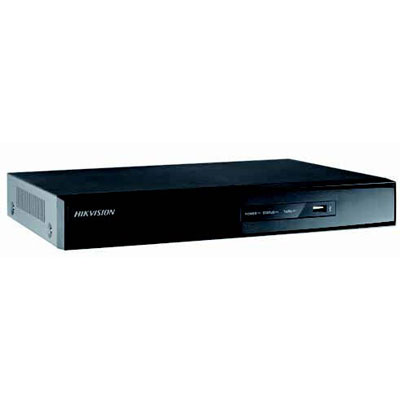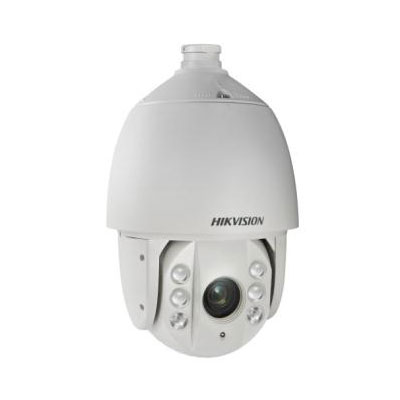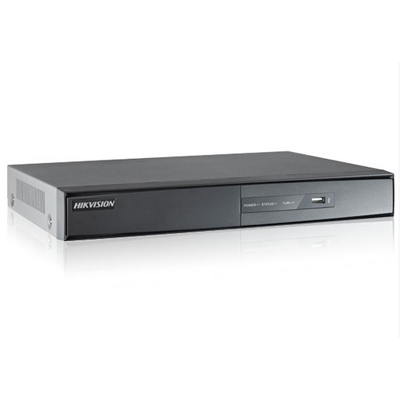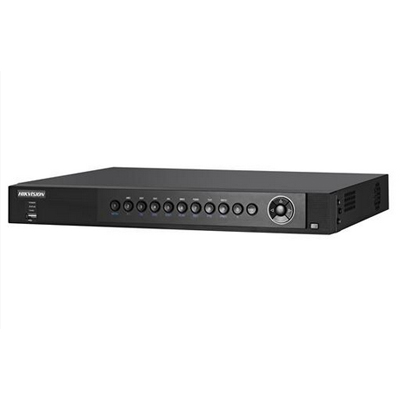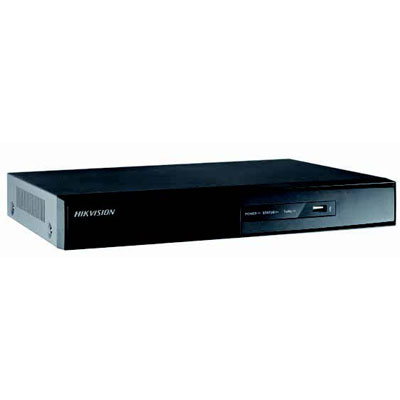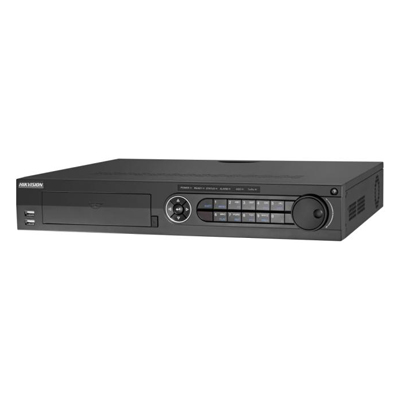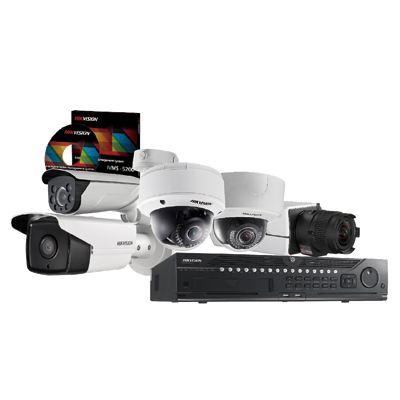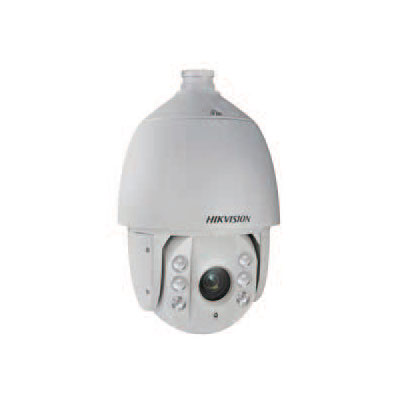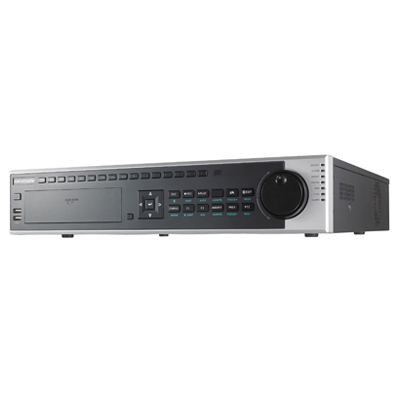Security monitoring system
Artificial Intelligence Technology Solutions, Inc., announced that its wholly owned subsidiary Robotic Assistance Devices, Inc., (RAD), has received two major awards at the 2025 Security Industry Association (SIA) New Products and Solutions (NPS) Awards. SARA™, RAD’s AI-powered incident response platform, earned the prestigious Judges’ Choice Award and was also selected as the winner in the Threat Detection and Response Solutions category. Both h...
Pioneering Yorkshire security firm Gough & Kelly has extended its 25-year partnership with the University of Sheffield with a six-figure electronic security contract. The five-year contract will see the installation and ongoing maintenance of over 1,300 advanced CCTV cameras integrated with Avada Connect AI technology in 150 university buildings across the city. The team at Gough & Kelly says this will create a ‘smarter, safer, and more secure’ campus for 100,000 daily users...
FLIR, a Teledyne Technologies company, is set to showcase its maintenance portfolio at Maintenance NEXT from April 8 to 10 in Rotterdam. FLIR Si1-LD acoustic camera FLIR’s main highlight at Maintenance NEXT will be the new Si1-LD industrial acoustic imaging camera, which brings faster and more accurate compressed air leak detection to those operating on a limited condition monitoring budget. Si1-LD offers improved detection and quantification capabilities in comparison with the existing...
Advanced Data Risk Management (ADRM), a pioneer in security consulting and managed security services and EyeOTmonitor, a pioneer in network and systems health management for the security industry, are proud to announce a strategic partnership. This collaboration will integrate EyeOTmonitor’s advanced health monitoring capabilities into ADRM’s Security Management Platform, DEFENDER, providing clients with enhanced system health monitoring and real-time change management awareness wi...
Johnson Controls, the pioneer for smart, healthy and sustainable buildings, announced the launch of IQ Panel 5. Powered by a Qualcomm® DrangonWing™ processor, the IQ Panel 5 preserves the features of the IQ Panel 4 that end users know and love while delivering a new powerful platform of the future. The IQ Panel 5 will be on display at ISC West 2025 in Las Vegas, Nevada, from March 31-April 4 (Booth 18033) for attendees to experience firsthand. Intuitive IQ Panel 5 packs “Deale...
Johnson Controls, the pioneer for smart, healthy and sustainable buildings, announced a series of upgrades to their access control and video surveillance (ACVS) solutions. These product enhancements will integrate with existing security architectures to improve management of mission-critical security and protection for people, buildings and assets. They will transform customers’ security posture, unlocking new levels of operational agility and cost-effectiveness. Advanced access control...
News
Relyon, a pioneering provider of an innovative approach to personal safety solutions, announced its strategic expansion into North and South America. This expansion marks a significant milestone in Relyon’s mission to provide cutting-edge safety and security technology to individuals, families, and organisations across the Americas. Relyon’s comprehensive safety Relyon’s comprehensive safety app utilises advanced technology, including real-time location sharing, video emergency calls, geofencing, and 24/7 professional monitoring, to provide users with unparalleled peace of mind. The app is designed to address the growing need for proactive safety measures in various sectors, including residential, educational, corporate, healthcare, and community safety. Relyon’s life-saving technology “We are thrilled to bring Relyon’s life-saving technology to a wider audience,” said Lee Sharir, CEO of Relyon who was chosen for the Israeli edition of Forbes 30 Under 30 list. “Our expansion into North and South America underscores our commitment to making safety accessible to everyone. We understand the increasing demand for reliable and proactive safety solutions, and we are dedicated to providing the safety and security industry with the tools they need to protect their clients.” Relyon’s expansion across the Americas Relyon’s expansion enables security companies across the Americas to offer a broad safety solution Relyon’s expansion will enable security companies across the Americas to offer a comprehensive safety solution that extends beyond traditional alarm systems. By partnering with Relyon, security providers can enhance their service offerings, increase customer satisfaction, and generate new revenue streams. Relyon mobile app range of features The Relyon mobile app with its platform offers a range of features designed to address the unique safety challenges faced by various industry industries: 24/7 Professional Monitoring: Access to round-the-clock partnership with professional security monitoring services. Video Emergency Calls: Direct video connection to a security monitoring centre, with automatic location sharing. Real-Time Location Sharing: Securely share the live location with pre-defined groups of friends and family. "Watch Me" Standby Mode: Discreetly activate monitoring when feeling unsafe, allowing the monitoring centre to track you without initiating a direct call. Emergency Chat Communication: Send urgent messages, reports, photos, and videos through a dedicated emergency chat feature. Geofencing: Set location boundaries and receive notifications when users arrive at and/or leave designated locations. Safe Driving Monitoring: Track family members' driving behaviour and receive alerts for specific driving events. Relyon partnerships with security and PERS Relyon is actively seeking partnerships with security and PERS companies including dealers, full-service companies, third party monitoring centres, proprietary command centres, and consultants throughout North and South America. For central stations and command centres, there is a special AI dashboard that provides: Smart Emergency Prioritisation Incidents are prioritised based on the most urgent events using artificial intelligence. Automated Call Summaries AI-generated call summaries to enhance efficiency. Task Force Deployment Forecasts Identifying potential future security risks to optimise resource allocation. Automated Task Assignment For command centres with security guards, the platform provides real-time task assignments for the security teams, driven by artificial intelligence. Real-Time Actionable Insights Receive recommendations to improve decision-making and situational awareness.
Building Intelligence, a provider of solutions that securely streamline vendor, vehicle, and visitor access, announces a pioneer transition to support its next phase of growth. The new pioneer structure will help the company scale operations and refine its organizational strategy to pursue new growth opportunities. Focusing on expansion Championing innovation and partnership with strategic growth and market-defining innovationFounder Jeffrey Friedman will assume the role of Chief Evangelist, focusing on business development, innovation, and strategic partnerships. Marc Rubner has been appointed CEO and will lead the company's strategic growth, driving market-defining innovation, financial performance, and expansion. Advancing security solutions "We're grateful for Jeff's leadership and dedication to Building Intelligence. His vision has driven the company's growth and supported the development of vehicle, vendor, and visitor management solutions that ensure higher levels of security and drive efficiencies,” said Warren Haber, Chairman of the Board of Building Intelligence. “As we move into this next chapter, we're excited to welcome Marc to the business. With expertise in technology and strong leadership skills, he has a track record of creating long-term value. Under his direction, we'll continue innovating and strengthening our market position to meet the evolving needs of our clients and partners." Shaping secure solutions Building Intelligence will drive innovation, enhance safety, and shape the future of secure, scalable solutions worldwideUnder Rubner’s leadership, Building Intelligence will continue to deliver secure, scalable, and cutting-edge solutions that enhance safety and efficiency for clients worldwide. Friedman will amplify the company’s vision further, deepen engagement with clients and partners, and spearhead new opportunities that will drive industry advancements. A vision for growth “This transition represents a strategic step forward and ensures that Building Intelligence continues to lead the industry while strengthening our foundation for long-term success,” Friedman said. “I am excited to focus on expanding our market reach, driving innovation, and supporting Marc as he leads the company into the future.” Experienced leadership With more than 30 years of leadership experience, Rubner has guided organizations through transformation across multiple industries. He previously served as Founder and CEO of GreenStation Consulting and as CEO of DonorDrive. Market strategies expert Earlier, as Vice President, Product Management and Marketing, Community Engagement and Campus Enablement at Blackboard, he led go-to-market strategies for the organization, a pioneering provider of access control and identity management in the higher education segment. Building the next phase "I'm honored to join Building Intelligence at such an exciting time,” Rubner said. “Businesses continue to face challenges with securing and optimizing their facilities, from the lobby to the loading dock, and there is a significant opportunity to solve these problems through technology.” “I'm eager to drive the company forward, unlock significant value, and collaborate with our customers and partners as we embark on building our next phase of acceleration."
i-PRO Americas Inc. (formerly Panasonic Security), a pioneering manufacturer of edge computing cameras for security and public safety, announced the launch of VideoInsight™ version 8.0, the latest release of its powerful video management system (VMS). Designed to meet the evolving security needs of school administrators, IT directors and security teams, VideoInsight 8.0 simplifies campus safety with an intuitive, cost-effective platform that delivers seamless integration, advanced AI tools and unmatched reliability. VideoInsight platform Educational institutions face ongoing challenges such as limited budgets, complex security infrastructures and fragmented security tools that hinder real-time response. The VideoInsight platform directly addresses budget concerns by not requiring camera licencing when using i-PRO cameras; this drives down upfront costs and lowers reoccurring costs. Intuitive dashboards and features VideoInsight 8.0 reduces administrative burdens, saving both time and resources With intuitive dashboards and automated maintenance features, VideoInsight 8.0 reduces administrative burdens, saving both time and resources. Built-in self-diagnostics, health monitoring and database optimisation ensure system reliability with 24/7 fault tolerance, minimising IT oversight and lowering maintenance costs, freeing up valuable resources for other critical school operations. It also offers cloud-based storage options without requiring additional middleware, allowing schools to reduce expensive hardware costs while maintaining easy access to video footage for investigations and compliance. Key benefits Scalable Security: VideoInsight 8.0 is designed to adapt to evolving security requirements in schools without adding complexity. Its open-platform design seamlessly integrates with i-PRO hardware and third-party solutions from Triton Ultra (vape detection), ZeroEyes (weapons detection), Wasabi (cloud storage), and Zenitel (video intercom), reducing upfront costs and long-term ownership expenses. Schools can integrate it effortlessly with existing systems while benefiting from cost-effective licencing and a future-ready security platform. Faster Forensic Searches with Built-In i-PRO Active Guard: i-PRO Active Guard is now natively integrated into the VideoInsight 8.0 platform, enabling forensic searches directly within the camera pane – eliminating the need for separate plugins. Schools can consolidate all security devices, including indoor, outdoor, and transportation cameras, into a single, user-friendly platform. i-PRO Active Guard extends across servers, clients, web and mobile platforms, enabling AI-triggered searches without switching between multiple applications. Unified Access Control and Video Management: VideoInsight 8.0 integrates seamlessly with i-PRO’s MonitorCast access control platform, creating a single-pane-of-glass view for access control events tied to video footage. This integration streamlines workflows, saving time and providing a comprehensive, real-time security overview. Whether on campus or off-site, security teams can monitor school security remotely with AI-triggered searches, instant alerts and mobile access, ensuring swift response to incidents. Enhanced Transit Solutions: VideoInsight 8.0 improves transit monitoring with native video offloading and durable storage technology, ensuring reliable video performance for buses and other school transportation systems—all within a single platform. Cost-Effective Body-Worn Camera Deployment: The i-PRO BWC4000 body-worn camera includes a bundled camera licence, allowing direct connectivity to VideoInsight 8.0 without additional licencing costs. Advanced accessible security solution “Our goal is to provide educational institutions with an advanced yet accessible security solution that provides an end-to-end offering with options for access control, vape and weapons detection, intercom, cloud storage and more,” said Adam Lowenstein, Product Director at i-PRO Americas, Inc. “VideoInsight 8.0 stands out by offering a unique combination of affordability, high-performance features and open infrastructure. Unlike other VMS solutions, it seamlessly integrates with existing hardware and software while reducing or even eliminating recurring licencing fees, ensuring institutions get maximum value without hidden expenses.”
PureTech Systems Inc., a pioneer in geospatial AI-boosted video analytics for wide-area perimeter and border security, is proud to announce the integration of its patented, award-winning SaaS solution, PurifAI™, with IMMIX’s CS & GS video monitoring platforms. This integration delivers a breakthrough in video alarm validation, significantly reducing nuisance alarms while enhancing the efficiency of both self-monitoring and central monitoring operations. PureTech’s advanced AI-powered analytics PurifAI is a cloud-based service designed to intelligently process video alarms from diverse sources PurifAI is a cloud-based service designed to intelligently process video alarms from diverse sources—including cameras, DVRs, NVRs, third-party video analytics, and motion sensors. Leveraging PureTech’s advanced AI-powered analytics, PurifAI filters out nuisance alarms, ensuring only verified security events are forwarded to IMMIX’s monitoring platforms. Non-actionable alarms are logged for reference, reducing operator distractions and dramatically improving operational effectiveness. Key benefits of PurifAI integration Near-Elimination of Nuisance Alarms: Operators can focus on critical threats instead of nuisance alarms. Scalability for Growth: Enables video monitoring centres to handle more sites without increasing staffing needs. Lower Operational Costs: Reduces time and resources spent on unnecessary alarms, improving cost-efficiency. Seamless Compatibility: Works with existing video infrastructure (NVRs, DVRs, cameras) without requiring additional hardware. Enhanced Operator Productivity: Fewer interruptions lead to better efficiency, job satisfaction, and customer retention. IMMIX’s monitoring platform "We are excited to integrate our award-winning, patented AI-driven video analytics into IMMIX’s monitoring platform," said Larry Bowe, CEO of PureTech Systems Inc. "PurifAI is a game-changer for central monitoring operations, offering superior filtering accuracy that eliminates nuisance alarms. This empowers monitoring centres to enhance service reliability, effortlessly scale operations, and significantly cut operating costs."
Mercury Security, the pioneer in open architecture access control hardware, returns to ISC West to highlight a new addition to their industry-defining controller platform—the Mercury embedded application environment, an open platform that enables technology partners and OEMs to develop and deploy custom applications directly on Mercury MP Controllers. “We have a lot of exciting things happening at Mercury, and a dedicated booth at ISC West is the perfect place to showcase them,” said Steve Lucas, vice president of sales at Mercury Security. Range of new solutions Unlike traditional access controllers that rely on server-based logic and are limited in upstream Lucas added: “We are excited to show customers the Mercury embedded application environment running on Mercury MP Intelligent Controllers, along with a range of new solutions targeting the platform. We’re giving our partners the ability to develop directly on the controller, unlocking new levels of system intelligence at the edge.” Unlike traditional access controllers that rely on server-based logic and are limited in upstream system connections, this platform brings real-time logic processing to the edge—reducing latency, increasing availability and enhancing system redundancy. Access control and IoT ecosystem By shifting intelligence closer to the door, the platform improves system responsiveness, minimises network dependency and enables advanced operational features. It also simplifies interoperability, seamlessly integrating controllers, IoT devices, elevators, readers, locks and more. For access control and IoT ecosystem stakeholders who need a secure, scalable and customisable platform, the Mercury embedded application environment delivers unmatched flexibility—supporting third-party app integration and enabling custom business logic to run directly on the controller. Integrating multiple systems and devices Mercury controllers act as a nexus, integrating multiple systems and devices for broader functionality Instead of just linking a reader to a management system for access decisions, Mercury controllers act as a nexus, integrating multiple systems and devices for broader functionality and stronger performance. “The access control industry is shifting toward more decentralised, intelligent security systems,” said Daniel Gundlach, vice president, head of Physical Access Control Solutions business unit in North America at HID. “Our embedded application environment gives our partners the tools to build smarter, more adaptable solutions that align with today’s challenges and tomorrow’s opportunities.” Key launch partners At ISC West, Mercury is showcasing the broad capabilities of its embedded application environment in collaboration with key launch partners and their certified apps: ASSA ABLOY HES KS210 OSDP Access Control Server Cabinet Lock: With the Mercury KS210 device app, OEMs can now quickly & easily add support for up to 32 KS210 OSDP server cabinet locks without the need to build custom integrations. HID pivCLASS: Enables pivCLASS support on Mercury MP Intelligent Controllers, adding PKI-based authentication at the door to meet security standards required in government facilities and other regulated industries. SecuriThings: This system-class app simplifies security audits by discovering devices on the network and generating detailed reports on their status, including firmware versions, host connectivity and other key security metrics. Viakoo: This SaaS application maintains system health across CPS environments, such as physical security. System reliability is ensured with real-time monitoring, vulnerability identification, lifecycle data, and other critical details. Viakoo takes action to remediate vulnerabilities with firmware updates, password rotations, and certificate management. New standard in access control Mercury MP Controllers quickly set a new standard in access control, offering unprecedented flexibility Launched in June 2024, Mercury MP Controllers quickly set a new standard in access control, offering unprecedented flexibility. These controllers are the foundation for the Mercury embedded application environment, enabling software providers and integrators to seamlessly combine access control technologies, elevator control, building automation, IoT applications and third-party solutions into a unified, centralised infrastructure. This flexible approach eliminates vendor lock-in and provides the freedom to choose the right solution for specific customer requirements while future-proofing investments. Mercury MP Controllers Mercury Security, an HID company, has pioneered flexible hardware solutions that empower OEMs and integrators to create best-in-class systems for over 30 years. Mercury MP Controllers support a wide range of consistent standards, including OSDP, MQTT and TLS, ensuring interoperability across access control, building automation and IoT applications.
Brinks Home, one of North America’s major home security and alarm monitoring companies, announced that its Monitoring Centres have earned UL certification for Alarm Validation Scoring (AVS-01). With only a handful of certified companies, it marks a significant advancement in alarm verification practices, and through Brinks Home’s achievement, the certification reinforces the company’s commitment to improving emergency response and reducing false alarms. The AVS-01 certification Designed by TMA, the AVS-01 is a framework for alarm validation scoring The AVS-01 certification comes at a time when the security industry is grappling with the growing challenge of false alarms, which place unnecessary strain on Emergency Communication Centres (ECCs) and local law enforcement. Designed by The Monitoring Association (TMA), the AVS-01 is a framework for alarm validation scoring that provides ECCs with the information needed to accurately assess the severity of an alarm and pass that information to the appropriate authorities before they arrive on-site. Brinks Home categorise alarms with specific threat levels With this scoring standard, monitoring centers like Brinks Home can categorize alarms with specific threat levels — from no threat to a confirmed threat to life — ensuring law enforcement understands the situation and can respond accordingly. “Accuracy in security monitoring is critical to ensure the most effective response to an alarm,” said Rick Sheets, Vice President of Monitoring and Compliance at Brinks Home, adding “Through the AVS-01 certification, we can provide ECCs with the most accurate information possible, reducing false alarms and improving safety for everyone involved.” Brinks Home adopts the necessary technology To achieve this certification, Brinks Home adopted the necessary technology in its monitoring systems To achieve this certification, Brinks Home adopted the necessary technology in its monitoring systems and underwent a UL audit for compliance. The process also involved integrating new workflows into the monitoring platform, training Emergency Dispatch Operators (EDOs) to gather and score information accurately, and implementing a quality assurance program to ensure adherence to the new standards. The AVS-01 certification is a new development in the security industry, and Brinks Home’s certification underscores the company’s dedication to innovation and customer safety. Brinks Home explores advanced verification methods As technology evolves, Brinks Home is exploring advanced verification methods, including video monitoring and AI recognition, in order to further enhance alarm assessment. The AVS-01 system will continue to refine alarm prioritisation, aiming for police to respond to the most critical alarms first with more accurate information to make better decisions and improve emergency response. Brinks Home remains committed to leveraging new technologies to reduce false alarms, enhance safety, and provide greater peace of mind for homeowners.
Relyon, a pioneering provider of an innovative approach to personal safety solutions, announced its strategic expansion into North and South America. This expansion marks a significant milestone in Relyon’s mission to provide cutting-edge safety and security technology to individuals, families, and organisations across the Americas. Relyon’s comprehensive safety Relyon’s comprehensive safety app utilises advanced technology, including real-time location sharing, video emergency calls, geofencing, and 24/7 professional monitoring, to provide users with unparalleled peace of mind. The app is designed to address the growing need for proactive safety measures in various sectors, including residential, educational, corporate, healthcare, and community safety. Relyon’s life-saving technology “We are thrilled to bring Relyon’s life-saving technology to a wider audience,” said Lee Sharir, CEO of Relyon who was chosen for the Israeli edition of Forbes 30 Under 30 list. “Our expansion into North and South America underscores our commitment to making safety accessible to everyone. We understand the increasing demand for reliable and proactive safety solutions, and we are dedicated to providing the safety and security industry with the tools they need to protect their clients.” Relyon’s expansion across the Americas Relyon’s expansion enables security companies across the Americas to offer a broad safety solution Relyon’s expansion will enable security companies across the Americas to offer a comprehensive safety solution that extends beyond traditional alarm systems. By partnering with Relyon, security providers can enhance their service offerings, increase customer satisfaction, and generate new revenue streams. Relyon mobile app range of features The Relyon mobile app with its platform offers a range of features designed to address the unique safety challenges faced by various industry industries: 24/7 Professional Monitoring: Access to round-the-clock partnership with professional security monitoring services. Video Emergency Calls: Direct video connection to a security monitoring centre, with automatic location sharing. Real-Time Location Sharing: Securely share the live location with pre-defined groups of friends and family. "Watch Me" Standby Mode: Discreetly activate monitoring when feeling unsafe, allowing the monitoring centre to track you without initiating a direct call. Emergency Chat Communication: Send urgent messages, reports, photos, and videos through a dedicated emergency chat feature. Geofencing: Set location boundaries and receive notifications when users arrive at and/or leave designated locations. Safe Driving Monitoring: Track family members' driving behaviour and receive alerts for specific driving events. Relyon partnerships with security and PERS Relyon is actively seeking partnerships with security and PERS companies including dealers, full-service companies, third party monitoring centres, proprietary command centres, and consultants throughout North and South America. For central stations and command centres, there is a special AI dashboard that provides: Smart Emergency Prioritisation Incidents are prioritised based on the most urgent events using artificial intelligence. Automated Call Summaries AI-generated call summaries to enhance efficiency. Task Force Deployment Forecasts Identifying potential future security risks to optimise resource allocation. Automated Task Assignment For command centres with security guards, the platform provides real-time task assignments for the security teams, driven by artificial intelligence. Real-Time Actionable Insights Receive recommendations to improve decision-making and situational awareness.
Building Intelligence, a provider of solutions that securely streamline vendor, vehicle, and visitor access, announces a pioneer transition to support its next phase of growth. The new pioneer structure will help the company scale operations and refine its organizational strategy to pursue new growth opportunities. Focusing on expansion Championing innovation and partnership with strategic growth and market-defining innovationFounder Jeffrey Friedman will assume the role of Chief Evangelist, focusing on business development, innovation, and strategic partnerships. Marc Rubner has been appointed CEO and will lead the company's strategic growth, driving market-defining innovation, financial performance, and expansion. Advancing security solutions "We're grateful for Jeff's leadership and dedication to Building Intelligence. His vision has driven the company's growth and supported the development of vehicle, vendor, and visitor management solutions that ensure higher levels of security and drive efficiencies,” said Warren Haber, Chairman of the Board of Building Intelligence. “As we move into this next chapter, we're excited to welcome Marc to the business. With expertise in technology and strong leadership skills, he has a track record of creating long-term value. Under his direction, we'll continue innovating and strengthening our market position to meet the evolving needs of our clients and partners." Shaping secure solutions Building Intelligence will drive innovation, enhance safety, and shape the future of secure, scalable solutions worldwideUnder Rubner’s leadership, Building Intelligence will continue to deliver secure, scalable, and cutting-edge solutions that enhance safety and efficiency for clients worldwide. Friedman will amplify the company’s vision further, deepen engagement with clients and partners, and spearhead new opportunities that will drive industry advancements. A vision for growth “This transition represents a strategic step forward and ensures that Building Intelligence continues to lead the industry while strengthening our foundation for long-term success,” Friedman said. “I am excited to focus on expanding our market reach, driving innovation, and supporting Marc as he leads the company into the future.” Experienced leadership With more than 30 years of leadership experience, Rubner has guided organizations through transformation across multiple industries. He previously served as Founder and CEO of GreenStation Consulting and as CEO of DonorDrive. Market strategies expert Earlier, as Vice President, Product Management and Marketing, Community Engagement and Campus Enablement at Blackboard, he led go-to-market strategies for the organization, a pioneering provider of access control and identity management in the higher education segment. Building the next phase "I'm honored to join Building Intelligence at such an exciting time,” Rubner said. “Businesses continue to face challenges with securing and optimizing their facilities, from the lobby to the loading dock, and there is a significant opportunity to solve these problems through technology.” “I'm eager to drive the company forward, unlock significant value, and collaborate with our customers and partners as we embark on building our next phase of acceleration."
i-PRO Americas Inc. (formerly Panasonic Security), a pioneering manufacturer of edge computing cameras for security and public safety, announced the launch of VideoInsight™ version 8.0, the latest release of its powerful video management system (VMS). Designed to meet the evolving security needs of school administrators, IT directors and security teams, VideoInsight 8.0 simplifies campus safety with an intuitive, cost-effective platform that delivers seamless integration, advanced AI tools and unmatched reliability. VideoInsight platform Educational institutions face ongoing challenges such as limited budgets, complex security infrastructures and fragmented security tools that hinder real-time response. The VideoInsight platform directly addresses budget concerns by not requiring camera licencing when using i-PRO cameras; this drives down upfront costs and lowers reoccurring costs. Intuitive dashboards and features VideoInsight 8.0 reduces administrative burdens, saving both time and resources With intuitive dashboards and automated maintenance features, VideoInsight 8.0 reduces administrative burdens, saving both time and resources. Built-in self-diagnostics, health monitoring and database optimisation ensure system reliability with 24/7 fault tolerance, minimising IT oversight and lowering maintenance costs, freeing up valuable resources for other critical school operations. It also offers cloud-based storage options without requiring additional middleware, allowing schools to reduce expensive hardware costs while maintaining easy access to video footage for investigations and compliance. Key benefits Scalable Security: VideoInsight 8.0 is designed to adapt to evolving security requirements in schools without adding complexity. Its open-platform design seamlessly integrates with i-PRO hardware and third-party solutions from Triton Ultra (vape detection), ZeroEyes (weapons detection), Wasabi (cloud storage), and Zenitel (video intercom), reducing upfront costs and long-term ownership expenses. Schools can integrate it effortlessly with existing systems while benefiting from cost-effective licencing and a future-ready security platform. Faster Forensic Searches with Built-In i-PRO Active Guard: i-PRO Active Guard is now natively integrated into the VideoInsight 8.0 platform, enabling forensic searches directly within the camera pane – eliminating the need for separate plugins. Schools can consolidate all security devices, including indoor, outdoor, and transportation cameras, into a single, user-friendly platform. i-PRO Active Guard extends across servers, clients, web and mobile platforms, enabling AI-triggered searches without switching between multiple applications. Unified Access Control and Video Management: VideoInsight 8.0 integrates seamlessly with i-PRO’s MonitorCast access control platform, creating a single-pane-of-glass view for access control events tied to video footage. This integration streamlines workflows, saving time and providing a comprehensive, real-time security overview. Whether on campus or off-site, security teams can monitor school security remotely with AI-triggered searches, instant alerts and mobile access, ensuring swift response to incidents. Enhanced Transit Solutions: VideoInsight 8.0 improves transit monitoring with native video offloading and durable storage technology, ensuring reliable video performance for buses and other school transportation systems—all within a single platform. Cost-Effective Body-Worn Camera Deployment: The i-PRO BWC4000 body-worn camera includes a bundled camera licence, allowing direct connectivity to VideoInsight 8.0 without additional licencing costs. Advanced accessible security solution “Our goal is to provide educational institutions with an advanced yet accessible security solution that provides an end-to-end offering with options for access control, vape and weapons detection, intercom, cloud storage and more,” said Adam Lowenstein, Product Director at i-PRO Americas, Inc. “VideoInsight 8.0 stands out by offering a unique combination of affordability, high-performance features and open infrastructure. Unlike other VMS solutions, it seamlessly integrates with existing hardware and software while reducing or even eliminating recurring licencing fees, ensuring institutions get maximum value without hidden expenses.”
PureTech Systems Inc., a pioneer in geospatial AI-boosted video analytics for wide-area perimeter and border security, is proud to announce the integration of its patented, award-winning SaaS solution, PurifAI™, with IMMIX’s CS & GS video monitoring platforms. This integration delivers a breakthrough in video alarm validation, significantly reducing nuisance alarms while enhancing the efficiency of both self-monitoring and central monitoring operations. PureTech’s advanced AI-powered analytics PurifAI is a cloud-based service designed to intelligently process video alarms from diverse sources PurifAI is a cloud-based service designed to intelligently process video alarms from diverse sources—including cameras, DVRs, NVRs, third-party video analytics, and motion sensors. Leveraging PureTech’s advanced AI-powered analytics, PurifAI filters out nuisance alarms, ensuring only verified security events are forwarded to IMMIX’s monitoring platforms. Non-actionable alarms are logged for reference, reducing operator distractions and dramatically improving operational effectiveness. Key benefits of PurifAI integration Near-Elimination of Nuisance Alarms: Operators can focus on critical threats instead of nuisance alarms. Scalability for Growth: Enables video monitoring centres to handle more sites without increasing staffing needs. Lower Operational Costs: Reduces time and resources spent on unnecessary alarms, improving cost-efficiency. Seamless Compatibility: Works with existing video infrastructure (NVRs, DVRs, cameras) without requiring additional hardware. Enhanced Operator Productivity: Fewer interruptions lead to better efficiency, job satisfaction, and customer retention. IMMIX’s monitoring platform "We are excited to integrate our award-winning, patented AI-driven video analytics into IMMIX’s monitoring platform," said Larry Bowe, CEO of PureTech Systems Inc. "PurifAI is a game-changer for central monitoring operations, offering superior filtering accuracy that eliminates nuisance alarms. This empowers monitoring centres to enhance service reliability, effortlessly scale operations, and significantly cut operating costs."
Mercury Security, the pioneer in open architecture access control hardware, returns to ISC West to highlight a new addition to their industry-defining controller platform—the Mercury embedded application environment, an open platform that enables technology partners and OEMs to develop and deploy custom applications directly on Mercury MP Controllers. “We have a lot of exciting things happening at Mercury, and a dedicated booth at ISC West is the perfect place to showcase them,” said Steve Lucas, vice president of sales at Mercury Security. Range of new solutions Unlike traditional access controllers that rely on server-based logic and are limited in upstream Lucas added: “We are excited to show customers the Mercury embedded application environment running on Mercury MP Intelligent Controllers, along with a range of new solutions targeting the platform. We’re giving our partners the ability to develop directly on the controller, unlocking new levels of system intelligence at the edge.” Unlike traditional access controllers that rely on server-based logic and are limited in upstream system connections, this platform brings real-time logic processing to the edge—reducing latency, increasing availability and enhancing system redundancy. Access control and IoT ecosystem By shifting intelligence closer to the door, the platform improves system responsiveness, minimises network dependency and enables advanced operational features. It also simplifies interoperability, seamlessly integrating controllers, IoT devices, elevators, readers, locks and more. For access control and IoT ecosystem stakeholders who need a secure, scalable and customisable platform, the Mercury embedded application environment delivers unmatched flexibility—supporting third-party app integration and enabling custom business logic to run directly on the controller. Integrating multiple systems and devices Mercury controllers act as a nexus, integrating multiple systems and devices for broader functionality Instead of just linking a reader to a management system for access decisions, Mercury controllers act as a nexus, integrating multiple systems and devices for broader functionality and stronger performance. “The access control industry is shifting toward more decentralised, intelligent security systems,” said Daniel Gundlach, vice president, head of Physical Access Control Solutions business unit in North America at HID. “Our embedded application environment gives our partners the tools to build smarter, more adaptable solutions that align with today’s challenges and tomorrow’s opportunities.” Key launch partners At ISC West, Mercury is showcasing the broad capabilities of its embedded application environment in collaboration with key launch partners and their certified apps: ASSA ABLOY HES KS210 OSDP Access Control Server Cabinet Lock: With the Mercury KS210 device app, OEMs can now quickly & easily add support for up to 32 KS210 OSDP server cabinet locks without the need to build custom integrations. HID pivCLASS: Enables pivCLASS support on Mercury MP Intelligent Controllers, adding PKI-based authentication at the door to meet security standards required in government facilities and other regulated industries. SecuriThings: This system-class app simplifies security audits by discovering devices on the network and generating detailed reports on their status, including firmware versions, host connectivity and other key security metrics. Viakoo: This SaaS application maintains system health across CPS environments, such as physical security. System reliability is ensured with real-time monitoring, vulnerability identification, lifecycle data, and other critical details. Viakoo takes action to remediate vulnerabilities with firmware updates, password rotations, and certificate management. New standard in access control Mercury MP Controllers quickly set a new standard in access control, offering unprecedented flexibility Launched in June 2024, Mercury MP Controllers quickly set a new standard in access control, offering unprecedented flexibility. These controllers are the foundation for the Mercury embedded application environment, enabling software providers and integrators to seamlessly combine access control technologies, elevator control, building automation, IoT applications and third-party solutions into a unified, centralised infrastructure. This flexible approach eliminates vendor lock-in and provides the freedom to choose the right solution for specific customer requirements while future-proofing investments. Mercury MP Controllers Mercury Security, an HID company, has pioneered flexible hardware solutions that empower OEMs and integrators to create best-in-class systems for over 30 years. Mercury MP Controllers support a wide range of consistent standards, including OSDP, MQTT and TLS, ensuring interoperability across access control, building automation and IoT applications.
Brinks Home, one of North America’s major home security and alarm monitoring companies, announced that its Monitoring Centres have earned UL certification for Alarm Validation Scoring (AVS-01). With only a handful of certified companies, it marks a significant advancement in alarm verification practices, and through Brinks Home’s achievement, the certification reinforces the company’s commitment to improving emergency response and reducing false alarms. The AVS-01 certification Designed by TMA, the AVS-01 is a framework for alarm validation scoring The AVS-01 certification comes at a time when the security industry is grappling with the growing challenge of false alarms, which place unnecessary strain on Emergency Communication Centres (ECCs) and local law enforcement. Designed by The Monitoring Association (TMA), the AVS-01 is a framework for alarm validation scoring that provides ECCs with the information needed to accurately assess the severity of an alarm and pass that information to the appropriate authorities before they arrive on-site. Brinks Home categorise alarms with specific threat levels With this scoring standard, monitoring centers like Brinks Home can categorize alarms with specific threat levels — from no threat to a confirmed threat to life — ensuring law enforcement understands the situation and can respond accordingly. “Accuracy in security monitoring is critical to ensure the most effective response to an alarm,” said Rick Sheets, Vice President of Monitoring and Compliance at Brinks Home, adding “Through the AVS-01 certification, we can provide ECCs with the most accurate information possible, reducing false alarms and improving safety for everyone involved.” Brinks Home adopts the necessary technology To achieve this certification, Brinks Home adopted the necessary technology in its monitoring systems To achieve this certification, Brinks Home adopted the necessary technology in its monitoring systems and underwent a UL audit for compliance. The process also involved integrating new workflows into the monitoring platform, training Emergency Dispatch Operators (EDOs) to gather and score information accurately, and implementing a quality assurance program to ensure adherence to the new standards. The AVS-01 certification is a new development in the security industry, and Brinks Home’s certification underscores the company’s dedication to innovation and customer safety. Brinks Home explores advanced verification methods As technology evolves, Brinks Home is exploring advanced verification methods, including video monitoring and AI recognition, in order to further enhance alarm assessment. The AVS-01 system will continue to refine alarm prioritisation, aiming for police to respond to the most critical alarms first with more accurate information to make better decisions and improve emergency response. Brinks Home remains committed to leveraging new technologies to reduce false alarms, enhance safety, and provide greater peace of mind for homeowners.


Expert commentary
The artificial intelligence revolution in physical security has arrived, transforming how we protect people, assets, and infrastructure. From smart buildings that automatically adjust access protocols based on real-time threat assessments to healthcare facilities using AI-enhanced video analytics for patient safety, these technologies are reshaping the industry landscape. But with this transformation comes a new era of regulatory oversight that security professionals must navigate carefully. Convergence of AI The convergence of powerful AI capabilities with traditional security systems has created unprecedented opportunities for enhanced protections while simultaneously raising important questions about privacy, transparency, and responsible deployment. As these technologies become more sophisticated, security professionals face the dual challenge of maximising their potential while ensuring compliance with evolving regulatory frameworks. The current state of AI in security systems By combining multiple data streams, AI creates a more comprehensive and intelligent security ecosystem Today's AI-driven security solutions extend far beyond traditional security capabilities. Modern systems can understand complex human behaviours, analyse crowd patterns in transportation hubs, detect early signs of trouble in retail environments, and even predict potential security breaches before they occur. By combining multiple data streams — video feeds, access control systems, audio detection, and various sensors — AI creates a more comprehensive and intelligent security ecosystem. Industrial applications The impact is particularly evident in integrated security operations. In healthcare settings, AI systems can simultaneously monitor patient safety, manage access control, and detect unauthorised entries, all while maintaining strict privacy protocols. In education environments, these technologies help safeguard campuses by identifying unusual behaviour patterns while respecting student privacy rights. Retail operations benefit from AI's ability to not only detect potential theft but also analyse customer flow patterns and identify operational inefficiencies. The technology's capabilities continue to expand through: Advanced anomaly detection that establishes normal activity patterns and flags deviations. Predictive analytics that forecast potential security risks before incidents occur. Natural language interfaces that allow security teams to query video data using voice or text commands. Multimodal analysis combining data from thermal cameras, LIDAR, IoT sensors, and other sources. Integration of multiple data sources Security systems are evolving into predictive platforms that can anticipate and prevent incidents These innovations represent just the beginning of AI's potential impact on security applications. As algorithms become more sophisticated and computing power increases, security systems are evolving into predictive platforms that can anticipate and prevent incidents rather than simply respond to them. The integration of multiple data sources allows for a more nuanced understanding of security situations, enabling more precise and effective responses to potential threats. Emerging regulatory frameworks The rapid advancement of AI capabilities has prompted governments worldwide to develop comprehensive regulatory frameworks. The European Union has taken the lead with its AI Act, categorising AI systems based on their potential risks and establishing strict guidelines for high-risk applications. Focus on safe, secure AI The United States is following suit, with recent executive orders focusing on safe, secure, and trustworthy AI development. These initiatives reflect growing global awareness of the need to balance technological advancement with ethical considerations and human rights protection. These regulations are reshaping how security technology providers approach development and implementation. Responsibility-by-design approach Companies must consider the entire lifecycle of their AI solutions, from initial development The focus has shifted toward a "responsibility-by-design" approach, where privacy protection, data security, and ethical considerations are built into systems from the ground up. This includes robust testing protocols, responsible data practices, and continuous monitoring of AI systems post-deployment. Companies must consider the entire lifecycle of their AI solutions, from initial development through deployment and ongoing operation. Transparency, accountability For security professionals, this regulatory evolution means adapting to new requirements around transparency, accountability, and human oversight. Security teams must document how AI systems make decisions, implement safeguards against bias, and ensure human operators maintain final authority over critical security decisions. The regulations also emphasise the importance of data protection, requiring organisations to implement strict controls over how information is collected, stored, and used within AI-powered security systems. Address challenges of AI The regulatory landscape continues to evolve, with new frameworks emerging that specifically address the unique challenges of AI in security applications. These include requirements for regular system audits, mandatory impact assessments for high-risk deployments, and specific guidelines for handling sensitive personal data in security contexts. Organisations must also develop clear procedures for addressing potential AI system errors or biases, ensuring that corrective measures can be implemented quickly when needed. Preparing for the future The challenge lies in maximising security effectiveness while maintaining transparency and public trust The security industry stands at a crucial junction where innovation meets responsibility. As AI capabilities grow more sophisticated, security professionals must balance the use of these powerful tools while adhering to evolving regulatory requirements. This balance becomes particularly critical in smart city applications, where AI systems might monitor public spaces for safety while respecting individual privacy rights. The challenge lies in maximising security effectiveness while maintaining transparency and public trust. Proactive approach Success in this new landscape requires a proactive approach. Security teams should invest in understanding both the technical capabilities and regulatory implications of their AI systems. This includes developing clear protocols for data handling, establishing robust testing procedures, and implementing continuous monitoring systems that can detect and address potential issues before they become problems. Organisations must also create comprehensive training programs to ensure security personnel understand both the capabilities and limitations of AI-powered systems. Human-in-the-loop approach The human element remains crucial. While AI can process vast amounts of data and identify patterns beyond human capability, security professionals must maintain oversight and final decision-making authority. This "human-in-the-loop" approach ensures that AI serves as a powerful tool for augmenting human judgment rather than replacing it. Training and education become increasingly important as security teams must understand not only how to operate AI-enhanced systems but also how to interpret their outputs and make informed decisions based on AI-generated insights. An ever-evolving environment The integration of emerging technologies like large language models and computer vision will create new opportunities Looking ahead, the security industry will likely see continued evolution in both AI capabilities and regulatory requirements. Future systems may incorporate more advanced predictive capabilities, enhanced natural language processing, and improved ability to understand complex human behaviours. However, these advancements will need to develop within an increasingly structured regulatory framework that prioritises privacy, transparency, and ethical use. The integration of emerging technologies like large language models and computer vision will create new opportunities while also introducing novel regulatory challenges. Physical security transformation The transformation of physical security through AI represents both an opportunity and a responsibility. By embracing responsible innovation practices while maintaining strong ethical standards, security professionals can help shape a future where advanced AI capabilities and regulatory compliance work together to create safer, more secure environments for everyone. Need for security guidelines The key to success lies in viewing regulatory requirements not as obstacles but as guidelines for developing more trustworthy and effective security solutions. As the industry continues to evolve, organisations that prioritise both innovation and compliance will be best positioned to leverage AI's full potential while maintaining public trust and regulatory compliance.
Digital access control has well-known benefits over traditional security, of course, but also costs attached to each stage of its lifetime. However, these costs are not fixed. Many factors – including building size, shape, type, location, national regulations and more – impact affordability and efficiency calculations. Crucially, the type of access solution a business selects – wired or wireless – impacts total operating costs, including during installation, running and any potential expansion or reconfiguration stages. Wireless installation Wiring premises can be expensive. So, the potential cost savings from choosing wireless digital access begin at the very start. Installation stage is the largest contributor to potential cost savings when businesses go wireless. In calculations for one report, access experts at ASSA ABLOY examined projected costs for a fictional 100-door installation. Labour savings for those who chose wireless over wired locks were 82.5%. Why? Firstly, because wireless installation is much faster. It is also less intrusive. Most wireless locking devices require little or no drilling of the door, whereas wired security needs cabling through and partly around a door – which means not just door damage, but the contracting of specialist electrical installers who may require multiple site visits. These costs add up. Digital access technology Torus aims for the highest level of LEED certification for all its new properties In Poland, for example, developer Torus aims for the highest level of LEED certification for all their new properties around Gdansk. Where possible, they choose products with Environmental Product Declarations (EPDs) and Green Circle documentation, favouring access solutions which reduce their carbon footprint. Wireless digital access technology is a natural choice. “The lack of wiring significantly reduces materials use, reduces costs, and ensures quick installation,” confirms Torus’ Roman Sokolowski. There’s no cabling, which cuts power consumption. There’s less damage to the building fabric and fitters make fewer journeys to and from the site. Adaptable locking solution By choosing a wireless solution, organisations also upgrade building security with little disruption. A wireless system makes it easier to improve security at an existing building via a retrofit process which does not inconvenience staff or disturb work routines. This was one goal at Plexal, a £15 million flexible work environment for London enterprise and academia. Plexal chose battery powered wireless locks integrated with DoorFlow, NetNodes’ online platform for managing and auditing building access. “Plexal required an adaptable locking solution for a range of different doors and, with no wiring required, it was quick and easy to install ASSA ABLOY Aperio® devices with minimal disruption,” confirms Stewart Johnson, Director at NetNodes. Cost savings with improved energy efficiency Choosing wireless over wired locking can play a vital role in reducing ongoing energy use Choosing wireless over wired locking can play an important role in reducing ongoing energy use – and, therefore, expenditure. Wholesale electricity prices in Europe are approximately double what they were in 2019, according to the IEA’s “Electricity 2024” report. For a variable cost such as energy, where businesses have little control over unit prices, it is critical to control usage, especially if high and/or changeable energy prices become what analysts at ING called “the new normal for business”. Thus, the fact that battery-powered locks consume much less energy than traditional wired solutions is increasingly relevant and important. Additional saving on energy costs Traditional wired door access devices often work via magnets connected permanently to mains electricity. These doors draw power around the clock to remain locked. Wireless locks work differently. They only “wake up” when presented with a credential, to make the access decision. This translates to an additional saving on energy costs during operation: more than 70%, or thousands of euros over a typical access system’s lifetime. Wireless digital access Wireless locks only need a change of their standard battery, which may be rechargeable Related energy and materials costs during in-use stage are also lower. Wireless locks only need a change of their standard battery – which may be rechargeable – typically once every two years. No specialist maintenance is required, saving on specialists and their travel to and from the site(s). By choosing wireless digital access, businesses help protect themselves against these ongoing costs, notably energy price increases and volatility. Cost-efficient flexible working, for staff and facilities managers Perhaps harder to quantify, but equally easy to imagine, the financial benefits of choosing a wireless digital solution are felt in the increased convenience and efficiency of daily operations. In the co-working sector, for example, flexible access to offices is a priority. As “fixed” office space rented by corporations continues to fall, co-working spaces are expected to keep growing, with one estimate suggesting almost 18% CAGR to 2030. To stand out from the competition, the founders of ULab in Alicante sought the latest innovations in access and design to create their 21st-century business centre. Part of the suite of digital access solutions from ASSA ABLOY, a SMARTair® system gave ULab real-time access management via battery-powered locks and Openowä, the Mobile Key solution for SMARTair, without any need to wire doors and other openings. SMARTair TS1000 Web interface With SMARTair and Openow, workspace residents can carry virtual keys on their smartphone With SMARTair and Openow, workspace residents can carry virtual keys on their smartphone; ULab’s security team update their rights over the air. An office manager can perform any operation remotely from the SMARTair TS1000 Web interface. In case of an emergency, they could lock-down the site or open doors remotely, for example. It’s convenient, efficient and boosts ULab’s security, benefiting users and managers. And because of SMARTair’s flexibility, they can comfortably welcome many more than their usual 100 daily users. “In addition to regular daily traffic, weekly traffic can almost multiply by 10 if an event is held,” says Enrique Burgos Pérez, Director at ULab. “We needed an access control system as flexible and convenient as SMARTair.” ASSA ABLOY benchmarking report Choosing wireless locks also adds flexibility – and can reduce costs – when an organisation reconfigures or expands their commercial space. High-quality wireless devices like SMARTair can typically be reinstalled at another opening without impacting reliability. They move to wherever is convenient. If a business is rethinking workspace to encourage flexible or hybrid work patterns, for example, cost efficiencies could be significant. Typical savings on office relocation or expansion are estimated at around 30% with wireless over wired locking, according to the same ASSA ABLOY benchmarking report. Cost efficiency and more control with ASSA ABLOY digital access To refit and improve their student accommodation, managers at the University of St Andrews sought energy- and cost-efficient access control. They chose Aperio, another innovative digital access solution from ASSA ABLOY. Approximately 1,600 doors so far are equipped with battery-powered Aperio escutcheons – without cabling. Aperio devices integrate fully with both the university’s existing central security system and their student ID card. University security managers continue to enjoy the efficiency benefits of monitoring and controlling access from a single point and in real-time, including for doors across multiple buildings. Aperio, another innovative digital access solution from ASSA ABLOY. Benefits of cost-efficiency In comparison to a wired solution, Aperio offers significant cost-efficiency benefits. Devices are wireless, so can be installed with little energy use and no need for wiring to the mains. They consume near-zero energy when idle and run on standard batteries, consuming little power during operation. Through the entire product life-cycle, Aperio combines reliability with cost effectiveness. “Aperio gives us central management and control,” says Pauline Brown, Associate Chief Information Officer at the University of St Andrews, “and contributes to our award-winning track record in energy efficiency.”
Rapid technological advancement, artificial intelligence (AI) and machine learning (ML) are revolutionising traditional on-premises video security systems. These next-level tools are not just enhancing video data capabilities; they're transforming how businesses approach security, operational efficiency, and information analysis. Video analytics have been a part of security systems for many years, but the arrival of deep learning in 2009 marked a turning point. By training neural networks, basic analytics tasks like motion detection, object detection, and tracking objects within scenes have become commonplace. This leap forward has paved the way for more sophisticated AI and ML applications in video security. Proactive security measures AI-powered systems can perform complex tasks such as pose estimation and anomaly detection Today's AI-powered systems can perform complex tasks such as pose estimation, anomaly detection, and behaviour analysis. These capabilities extend far beyond simple, passive monitoring, offering organisations rich insights and proactive security measures. For instance, analytics can now determine whether people are engaged in hostile or benign interactions, recognise unusual events that may signal safety hazards, and even predict potential security breaches before they occur — all based on analysing massive amounts of data that humans alone could never process. Enhancing on-premises infrastructure While the power of AI and ML in video security is clear, integrating these technologies into existing on-premises systems presents both opportunities and challenges. One of the primary considerations is the increased demand for processing power and storage capacity. As solution technology expands, hardware requirements will increase. This reality necessitates a strategic approach to system design and implementation. Organisations must carefully evaluate their current infrastructure and plan for future needs to ensure their on-premises systems can handle the computational demands of AI and ML tools. However, the benefits often outweigh the challenges. AI-enhanced on-premises systems offer several advantages: Real-time processing: On-premises AI can analyse video feeds in real time, allowing for immediate response to security threats. Data privacy: Keeping data processing on-site can help organisations meet strict data privacy regulations and protect sensitive information. Customisation: On-premises systems allow for greater customisation of AI models to meet specific security needs. Reduced latency: Processing data locally eliminates the need for constant cloud communication, reducing latency in critical security applications. The role of open platform video technology To fully leverage AI and ML capabilities in on-premises video security systems, open-platform video management software (VMS) plays a crucial role. An open platform VMS allows for seamless integration of various AI and ML tools, cameras, and other security devices, creating a highly flexible and scalable system. An open VMS can integrate thousands of cameras and sensors, allowing for centralised management and analysis of vast amounts of data. This approach enables security teams to quickly adapt to new threats and implement new and unplanned AI and ML solutions as they become available. Video system management The hybrid approach to video system management combines on-premises infrastructure with cloud services It's important to note that many organisations choose to deploy a hybrid approach to video system management that combines on-premises infrastructure with cloud services. This strategy can offer the best of both worlds: the control and low latency of on-premises systems with the scalability and advanced capabilities of cloud-based AI and ML tools. For example, some cities have implemented hybrid data storage models, hosting critical real-time data on local servers while leveraging cloud services for long-term storage and advanced analytics. This approach allows for efficient management of large amounts of high-resolution video data while reducing costs associated with on-premises storage expansion. Practical applications and benefits The integration of AI and ML into on-premises video security systems is transforming security practices across industries, offering benefits that extend beyond traditional surveillance. These advanced technologies enhance security measures while providing valuable insights for operational efficiency and strategic decision-making. By analysing video data in real time, AI and ML-powered systems can detect patterns and automate responses in unprecedented ways. Here are some key examples of sector-specific benefits: Retail: AI-powered analytics can optimise product placement, track shopping patterns, and enhance loss prevention efforts. Education: K-12 schools can use advanced video analysis to address issues like vaping and bullying, monitor traffic, ensure that proper procedures are followed, and provide enhanced safety and security. Manufacturing: AI can streamline quality control processes, detect safety violations, and optimise production line efficiency. Healthcare: Intelligent video systems can monitor patient safety, manage access control, and even assist in documenting and verifying that procedures and protocols are followed appropriately. Transportation: AI-enhanced video systems can improve traffic management, enhance security in transit hubs, and assist in incident response. Challenges and considerations Ensuring access to robust, diverse, and representative data sets is essential for training AI models effectively AI and ML hold great promise for on-premises video security, but organisations may encounter challenges during implementation. The considerable upfront costs could discourage smaller businesses or those with tight budgets. Nevertheless, this should be viewed as a long-term investment with significant returns in enhanced security and operational efficiency. Implementing AI-powered systems in video security can be complex, often requiring specialised skills, potentially creating a gap within existing IT or security teams. To bridge this skills gap, organisations may need to invest in training or partner with external experts to address this challenge. Additionally, the quality of data is crucial for effective AI and ML implementation; poor or insufficient data can result in inaccurate analyses and unreliable results. Ensuring access to robust, diverse, and representative data sets is essential for training AI models effectively. Benefits of integrating AI and ML Ethical considerations surrounding privacy, consent, and potential algorithmic bias are also critical. Organisations must strike a balance between enhancing security and safeguarding individual privacy rights to maintain public trust in these technologies. Despite these challenges, the benefits of integrating AI and ML into on-premises video security systems often outweigh the difficulties. Careful planning, resource investment, and a strong focus on ethical and regulatory compliance can lead to more effective, efficient, and intelligent security solutions. Future outlook Edge computing capabilities will enable sophisticated AI processing directly on cameras The future of AI and ML in on-premises video security promises significant advancements that will address current limitations and unlock new possibilities. Edge computing capabilities will enable sophisticated AI processing directly on cameras and other security devices, reducing strain on central servers and potentially lowering hardware requirements. This, combined with more efficient AI algorithms, will democratise access to advanced AI and ML capabilities for organisations of all sizes. AI-powered analytics Predictive analytics will become a cornerstone of future video security systems, marking a shift from reactive to proactive security measures. As AI models become more sophisticated, their ability to anticipate and prevent security incidents will improve dramatically, revolutionising risk management and incident response. The integration between video security and other business systems will deepen, with AI-powered analytics providing insights beyond security into business operations and strategic decision-making. Data for training AI models Explainable AI will become more overall, which is vital for building trust in automated systems Automation of security processes will reach new heights, freeing human operators to focus on high-level decision-making and complex situations. To support this evolution, we'll likely see increased use of synthetic data for training AI models, addressing privacy concerns, and improving model robustness. Explainable AI will become more prevalent, which is crucial for building trust in automated systems and meeting regulatory requirements. For security professionals, embracing these technologies is no longer optional but necessary to remain competitive and provide the best possible service to clients. By leveraging open platform VMS and carefully planning system architectures, organisations can create flexible, scalable, and powerful video security solutions that not only protect assets but also drive business value. Enhanced video security systems The key to success will be finding the right balance between on-premises control and cloud-based capabilities while addressing important considerations around privacy, ethics, and regulatory compliance. With thoughtful implementation and ongoing adaptation, AI and ML-enhanced video security systems will continue to play an increasingly central role in safeguarding our businesses, institutions, and communities.
Security beat
The information age is changing. Today, we are at the center of addressing one of the most critical issues in the digital age: the misinformation age. While most awareness of this problem has emerged in the consumer and political worlds, the issue cannot be ignored when it comes to the authenticity and protection of video and security data. Video surveillance data SWEAR is a company with the mission to ensure the integrity of video surveillance data by mapping video data and writing it into the blockchain, providing real-time, immutable proof of authenticity. Blockchain, which is the underlying technology that enables cryptocurrencies, is a decentralised digital ledger that securely stores records across a network of computers in a way that is transparent, immutable, and resistant to tampering. SWEAR solution The SWEAR solution is based on proactive, foundational protection that validates data at the source The SWEAR solution is based on proactive, foundational protection that validates data at the source before any opportunity for manipulation can occur. “Our technology is about proving what’s real and our goal is to ensure that security content and video surveillance data remain untampered with and reliable when needed,” says Jason Crawforth, Founder and CEO of SWEAR. Real-time authentication Security leaders need to ensure that the content they are relying on to make mission-critical decisions is authentic. Once verified, organisations can be sure that their investment in video can be trusted for critical use cases, including intelligence operations, legal investigations, and enterprise-scale security strategies. SWEAR seeks to embed trust and authenticity directly into video surveillance content at the point of creation. This ensures real-time authentication while proactively preventing tampering or manipulation before it can happen. AI-generated content The rise of AI-generated content, such as deepfakes, introduces significant challenges As AI transforms the landscape of video surveillance by enhancing threat detection and predictive analysis, it also introduces the very real risk of manipulation through AI-generated content. This presents a significant challenge in protecting critical security data, especially in mission-critical applications. The rise of AI-generated content, such as deepfakes, introduces significant challenges when it comes to ensuring the protection of digital media like video surveillance. Recent study findings It is a fact that digital media content is being questioned more regularly, which puts businesses, legal systems, and public trust at risk. A recent study from the Pew Research Center found that 63 percent of Americans believe altered videos and images create significant confusion about the facts of current issues. Last month, California Governor Gavin Newsom signed three bills aimed at curbing the use of AI to create fake images or videos in political ads ahead of the 2024 election. Footage authenticity “While most of the news cycle has centered on the use of fake content in politics, we need to think about how manipulated videos could affect security,” says Crawforth. “In video surveillance, ensuring the authenticity of footage is critical for keeping operations secure and safe around the world. That means verifying and protecting video data is a must.” Organisations must be capable of performing thorough digital investigations, which involve retrieving and analysing video and security data from devices and networks through a chain of evidence. Digital forensic capabilities Strong digital forensic capabilities also enhance incident response, risk management, and proactive security An in-depth understanding of who has handled video data, how it was handled, and where it has been is an important step in responding to security incidents, safeguarding assets, and protecting critical infrastructure. Strong digital forensic capabilities also enhance incident response, risk management, and proactive security measures, all essential for risk management, regulatory compliance, and cost control, says Crawforth. An unbroken chain of custody “By using tools to identify, preserve, and analyse digital evidence, organisations can ensure swift and accurate responses to security incidents,” he adds. “Using the latest tools and techniques is vital for maintaining a strong security posture." "But you must ensure your digital content isn’t manipulated.” SWEAR’s technology provides an unbroken chain of custody, ensuring that video evidence can be trusted and admissible in court and forensic applications. Authenticating content Authenticating content also strengthens accountability and trust, protecting organisations By verifying video content is protected from tampering, manipulation, or forgery, organisations can be sure that they have reliable evidence that produces actionable results. Authenticating content also strengthens accountability and trust, protecting organisations from legal disputes or compliance violations. Safeguarding digital content “With an increasing amount of disinformation in today’s world, we sought to develop an innovative solution to safeguard the integrity of digital content,” says Crawforth. SWEAR safeguards security content using real-time “digital DNA” encoding. It integrates directly at the video management system level, ensuring it is preserved with a secure chain of custody and maintains integrity for evidentiary purposes. Real-time “digital DNA” encoding The digital DNA is then stored on a blockchain, creating an immutable record The solution integrates with cameras and other recording devices to map this digital DNA of the video data, all in real-time. The digital DNA is then stored on a blockchain, creating an immutable record that tracks the content’s history and integrity. Any attempt to manipulate the media can be instantly detected by comparing the current state of the media to its original, authenticated version. SWEAR is actively collaborating with video management solution providers to integrate the technology into their platforms. Video and security data benefits “We’re still in the early stages of our collaboration in this space, but it is clear that the industry recognises that we have to work together to mitigate this risk proactively before it becomes a significant issue,” says Crawforth. “The feedback we have received from the industry to date has been beyond our expectations, and we expect to have more integration partners to highlight shortly.” “We should approach this as a collaborative effort across the industry, as ensuring the authenticity of video and security data benefits everyone involved,” says Crawforth.
Casinos face multiple security issues caused by potential bad actors, everything from cheating to vandalism, from theft to vagrancy. A new intelligent technology can monitor for specific keywords and behaviours. The technology scans the entire casino premises constantly for potential threats and notifies key personnel when they happen. Casinos are among the environments deploying the OpticSense system by Huvr Inc., which uses special fibre optic technology called an interferometer to secure large areas. Imagine a very sensitive loop made of fibre-optic cables placed around the perimeter of a facility. System’s artificial intelligence Basically, it converts the entire facility into a highly sensitive microphone, detecting any slight disturbances, such as an unusual movement or sound. When the system senses something out of the ordinary, it immediately triggers cameras to look at the disturbance and record a short video. The system’s artificial intelligence (AI) then analyses both the sound and video to determine what's happening. It compiles a detailed report and immediately sends the information to security teams. OpticSense OpticSense can hear, see, and analyse potential threats automatically before they get out of control. “This makes it possible for fewer people to do more,” says Herman C. DeBoard III, CEO and Founder of Huvr Inc, adding “When you don’t need as many personnel to monitor video feeds and analyse data, you can drastically reduce your labour costs. Best of all, when you optimise your resource allocation, your security teams can respond more effectively to each threat.” The system’s AI analyses sound and video to define what's happening. Combining fibre optics and AI Huvr was originally designed as a platform to provide immersive virtual travel experiences Huvr was originally designed as a platform to provide immersive virtual travel experiences. However, with the acquisition of OpticSense and Grip Places, the company pivoted to integrate advanced fibre-optic technology and AI-driven analytics into a comprehensive security system. The system’s artificial intelligence and fibre-optic interferometer technology work together to detect and analyse real-time threats. When the Fibre Optic Ring Interferometer (FoRi) detects even minute audio abnormalities, it triggers AI analysis. In split seconds, the AI directs cameras to record 60 seconds of video, compiles a detailed report, and then texts the real-time intelligence to security teams and authorities. Intelligent security solutions The growing need for intelligent security solutions can help to drive Huvr's entry into the security marketplace. Advanced technology enables the company to meet the increasing concerns surrounding public safety and the growing need for real-time threat analysis. The AI system classifies each detected anomaly according to its severity and stores data from various incidents to improve its risk assessment abilities over time. This continuous learning enables the AI to become more adept at accurately identifying and responding to threats specific to the casino environment. AI system classifies each detected anomaly according to its severity. Simple and discreet installation The system involves installing fibre optic cables around the casino’s perimeter The system involves installing fibre optic cables around the casino’s perimeter. It’s a simple job that typically requires less than a day. “These cables allow the casino to establish a smart perimeter detection system without significant infrastructure alterations,” says DeBoard Casinos typically employ upwards of 6,000 cameras, but human security teams cannot feasibly monitor all the incoming data at once. Huvr's OpticSense product becomes like the brain of the casino, constantly monitoring disturbances and responding in real time. Huvr’s fibre optic cables Huvr’s advanced detection algorithms work in tandem with a casino’s existing camera infrastructure, simply adding a layer of security that converts traditional security measures into an intelligent system that continuously monitors and analyses video footage. With Huvr’s fibre optic cables easily hidden or buried and the server roughly the size of a shoe box, the system is designed to be extremely discreet. It can be operated by a single person using a small handheld device. The security system is simple to scale and manage without disrupting casino operations. Security system is simple to work without disrupting casino operations. Autonomy boosts productivity Huvr automates surveillance and anomaly detection to decrease the load on security teams Autonomy is an important aspect of this new technology. Traditional security systems have required constant human monitoring, but Huvr automates surveillance and anomaly detection to decrease the load on security teams. “Without any human direction, Huvr detects minute disturbances, triggering the AI system to direct cameras and analyse video footage instantaneously,” says DeBoard. He adds, “The intelligent system rapidly monitors every anomaly and accurately decides which present potential threats. When it detects an issue, it compiles a detailed report that includes the number of individuals involved, their appearances, direction of movement, and licence plates. It takes only seconds to text this report to security teams and authorities.” Applications beyond casinos Beyond casinos, Huvr already provides proactive security in a wide variety of settings. In banks, the system monitors parking lots and ATM machines for suspicious activity. In large stadiums, it proactively detects target words such as “help” or “gun.” In schools, Huvr’s fibre optic ring interferometer secures campuses against unauthorised intrusions. In hospitals, it alerts medical staff when patients need immediate care. In airport terminals, it monitors for suspicious behaviour. In restaurants or construction sites, the system learns to monitor for safety violations and health hazards. Smart perimeters around critical infrastructure The fibre optic cables also form smart perimeters around critical infrastructure like power grids, cell towers, and bridges to watch for physical disturbances or tampering. “Because the system can be customised to each new environment and can learn quickly, the applications are virtually limitless,” says DeBoard. {##Poll1728555696 - Do you believe AI-driven perimeter detection systems will significantly reduce security labour costs?##}
In today's complex security landscape, ensuring the safety of building occupants and assets requires more than just cutting-edge technology. Holistic approach The SHIELD certification, introduced by the Secure Buildings Council, is designed to help building owners, tenants, and security professionals navigate this challenge effectively. SHIELD offers a holistic approach to physical security that emphasises not just the systems in place, but the collaboration among all stakeholders. With practical, actionable guidance, SHIELD certification seeks to become a benchmark for secure building environments. What is SHIELD? Its primary goal is that buildings are equipped with security systems and protocols that protect against threats SHIELD is a comprehensive certification programme developed by the Secure Buildings Council to establish and maintain a standard of excellence in building security. Its primary goal is to ensure that buildings are equipped with security systems and protocols that not only protect against threats but also enhance the overall safety and operational efficiency of the facility. Forward-thinking design It encourages a multi-disciplinary approach, bringing together building owners, managers, security professionals, architects, and engineers to foster an integrated security strategy. By adhering to SHIELD's standards, facilities can assure tenants, visitors, and investors that the building is designed to be a secure and resilient environment. The intent is to create safer spaces through collaboration, forward-thinking design, and stringent security measures. Enhancing security and building resilience SHIELD certification helps to ensure that buildings are not only secure from external threats but are also resilient in the face of internal vulnerabilities. This includes everything from access control systems and surveillance infrastructure to cybersecurity measures and emergency response protocols. Detailed framework SHIELD acts as a roadmap to assess and improve the effectiveness of a building's security architecture The certification process provides a detailed framework for identifying potential risks, implementing best practices, and continuously monitoring security measures. For security professionals, SHIELD acts as a roadmap to assess and improve the effectiveness of a building's security architecture. The programme emphasises the importance of both physical and digital security, recognising that modern threats often cross over from one realm to the other. Benefits for tenants, investors, and facility managers One of the standout benefits of SHIELD certification is the assurance it provides to tenants and investors. Certified buildings demonstrate a commitment to security that can attract higher-quality tenants and increase the building’s market value. For investors, a SHIELD-certified building represents a lower-risk investment, as the facility is better protected against both physical threats and operational disruptions. Standardised procedures Additionally, facility managers benefit from SHIELD's emphasis on clear, standardised procedures for maintaining and upgrading security measures. The certification helps streamline operations by ensuring that all security protocols are applied consistently and reviewed regularly. This results in a safer, more efficient building environment for everyone involved. Promoting collaboration and industry integration Architects, engineers, and security professionals are encouraged to work together from the earliest stages SHIELD certification is not just about the implementation of security technologies—it is also about fostering collaboration among various stakeholders. Building owners, architects, engineers, and security professionals are encouraged to work together from the earliest stages of design and planning. This collaborative approach helps ensure that security measures are integrated into the fabric of the building, rather than being tacked on as an afterthought. Multi-disciplinary synergy Furthermore, SHIELD works in alignment with other industry standards, such as LEED for environmental sustainability and WELL for health and well-being. This multi-disciplinary synergy allows building owners to pursue multiple certifications concurrently, enhancing the building's overall value and appeal. Achieving SHIELD certification: The process The process to become SHIELD certified involves a comprehensive assessment of a building’s security features and protocols. This begins with a gap analysis, where security professionals evaluate the building's current state against SHIELD's stringent standards. From there, a detailed action plan is developed to address any deficiencies. Once the necessary upgrades and protocols are in place, the building undergoes a final audit before the certification is awarded. Incorporating multiple elements SHIELD takes a holistic approach that encompasses not just physical security but also digital and procedural elements A common misconception about SHIELD is that it is solely focused on physical security systems. In reality, SHIELD takes a holistic approach that encompasses not just physical security but also digital and procedural elements. Another misconception is that SHIELD is only applicable to large-scale commercial properties, when in fact it can be adapted for buildings of various sizes and functions. Global adoption of SHIELD certification SHIELD certification is seeing increased adoption across North America, Europe, and parts of Asia. Its focus on a comprehensive, collaborative approach to security has made it particularly attractive in high-risk industries such as finance, healthcare, and data centres. While it is still gaining traction in some regions, SHIELD is poised to become a global standard for building security in the coming years. SHIELD certification represents a significant step forward for building security. By fostering collaboration and emphasising a holistic approach, SHIELD helps create safer, more resilient buildings that protect both the physical structure and the people and assets inside.
Case studies
Interface Systems, a managed service provider of security, actionable insights, and purpose-built networks for multi-location businesses, announced that Nicker Management, a fast-food franchise operator in the Los Angeles area, has successfully implemented Interface’s Virtual Security Guard solution. By deploying Interface’s advanced security technology, Nicker Management has enhanced safety, reduced operational costs, and provided a secure environment for employees and customers. Nicker Management Nicker Management, led by sisters Nicole Harper Rawlins (CEO) and Kerri Harper-Howie (Co-owner), operates 24 fast-food restaurants across South LA, Compton, Lynwood, and Carson. Faced with persistent security challenges, including loitering, panhandling, and criminal activity, the company sought a modern, cost-effective solution to protect its employees and guests. Addressing critical security concerns Nicker Management chose Interface Systems to implement the Virtual Guard solution at one of its restaurants “We’re faced with lots of challenges with crime, unhoused people, and individuals suffering from mental and/or substance abuse issues,” said Harper Rawlins. “It creates significant risk at our restaurants. Over the years, we experimented with a range of security solutions, and hiring on-site guards quickly became costly and unsustainable.” After evaluating various options, Nicker Management chose Interface Systems to implement the Virtual Guard solution at one of its restaurants, ensuring a proactive and scalable approach to security. How can Virtual Guard Solution help? 24/7 Monitoring & Rapid Response – Trained intervention specialists continuously monitor restaurant locations to deter loitering, panhandling, and aggressive behavior in real time. Automated Voice-Downs – Proactive announcements throughout the day signal active monitoring and reinforce security presence. Virtual Tours – Scheduled and unscheduled remote video assessments help identify threats, suspicious activities, and compliance issues. Employee Security Escorts – Live monitoring ensures employees' safe passage to and from their vehicles during vulnerable times such as shift changes, and opening, and closing hours. Secure working environment “Knowing there’s a professionally trained security team on standby gives us confidence that we can maintain a secure working environment at all hours,” said Harper Rawlins. The deployment of Virtual Guard has streamlined security operations at Nicker Management’s restaurant, allowing staff to focus on providing excellent customer service without the burden of handling security incidents. 24/7 monitoring With 24/7 monitoring by Virtual Guard, employees and customers feel safer, and staff no longer have to handle security threats alone. In addition, automated alerts also remind employees of key procedures during shift changes. The system's effectiveness was demonstrated during a recent incident when a loiterer refused to leave the restaurant lobby. The staff triggered a silent alarm, and the Virtual Guard team immediately responded with a voice-down, prompting the individual to leave without further incident. Optimises costs “Interface’s Virtual Guard solution empowers franchise businesses like Nicker Management to address security risks effectively while optimising operational costs,” said Sean Foley, Chief Revenue Officer at Interface Systems. “Our innovative approach allows employees to focus on delivering excellent service, knowing their safety is in trusted hands.”
Tenerife Norte-Ciudad de La Laguna Airport has significantly improved its safety by installing state-of-the-art video technology from German manufacturer Dallmeier. The Panomera® multifocal sensor cameras are used for comprehensive monitoring of the movement area. A major hub for domestic flights Tenerife Norte-Ciudad de La Laguna Airport (TFN) is located about 10 kilometres west of the capital, Santa Cruz de Tenerife, in the municipality of San Cristóbal de La Laguna. It mainly handles domestic flights: connecting flights to the other Canary Islands, such as Gran Canaria or Lanzarote, as well as scheduled flights to the Spanish mainland. The main destination is Madrid-Barajas, with over one million passengers, followed by Barcelona, Seville, and Bilbao. Tender for detection, supervision, and recording The tender documents specified the installation of a monitoring and control system to detect To further increase safety at Tenerife Norte-Ciudad de La Laguna Airport and to improve airport operations, the entire movement area was to be covered. The tender documents specified the installation of a monitoring and control system to detect, supervise, and record operations in that area in high resolution. Installation sites as critical points The total area to be monitored is huge, with the runway (with the focus at both ends), apron, taxiways, and service roads adjacent to the apron. The main challenge was that it was not possible to place camera masts randomly on the movement area, so existing buildings had to be used as installation points. Simplified maintenance “We wanted to minimise the number of installation points and camera systems to avoid the need for additional infrastructure such as masts, cabling, communication interfaces, etc., and to simplify subsequent maintenance processes,” says Carlos Jesús Delgado Gómez, Head of the Director’s Office at TFN. “And, of course, airports have strict regulations for any type of installation, especially in the movement area. That’s why there were very limited options when it came to selecting installation points. Nevertheless, the desired area had to be monitored at the highest resolution and the recording always had to be at maximum resolution.” High-resolution coverage High-resolution coverage of large areas under these conditions could not be satisfactorily achieved High-resolution coverage of large areas under these conditions – a minimum number of installation points and camera systems – could not be satisfactorily achieved with conventional single-sensor cameras. Tenerife Norte-Ciudad de La Laguna Airport therefore decided to use Dallmeier’s patented Panomera® multifocal sensor technology. Maximum resolution at long distances By combining multiple lenses and sensors with different focal lengths in a single optical unit, multifocal sensor technology offers high resolution across the entire object space. This means that even distant objects can be captured clearly, and significantly fewer systems are required overall than with conventional single-sensor cameras. “We were able to install the Panomera® on existing building facades and roofs without any problems”, says Carlos Jesús Delgado Gómez. “No other camera system was able to cover such a large area with so few cameras and installation points at such a high resolution.” Increasing operational safety and optimising processes The installed video technology not only increases operational safety but also allows processes to be optimised and disputes to be resolved quickly and clearly. One of the areas monitored is the aprons, where aircraft park and are prepared for the next flight. Since every minute spent parking is money for the airport company, there are always disputes about who is responsible for delays and the resulting additional parking fees. Was the fuel truck there on time? Did the catering arrive on time? Damage management can now be carried out quickly and objectively thanks to clear video recordings. For example, did the damage occur while the aircraft was parked or docked, or was it already there? The advantage of multi-user capability Any number of operators can access the image at the same time, each zooming in on the area of interest In addition to its ability to cover large areas, multifocal sensor technology is characterised by its multi-user capability. Panomera® works like a virtual combination of any number of PTZ cameras with the key advantage that the operator moves virtually in the image, rather than moving the camera mechanically as with PTZ cameras. As a result, any number of operators can access the image at the same time, each zooming in on the area of interest. Unlike conventional PTZ cameras, the entire image is always recorded. Bandwidth savings thanks to multicast capability As several users always need to access the live stream at the same time, the so-called multicast capability was also a decisive advantage of the Panomera®. Multicast capability allows data from a single source to be sent to multiple recipients simultaneously. This means that the video stream can be efficiently distributed to multiple devices or users without having to send the data multiple times. Multicast reduces network load and makes more efficient use of bandwidth. 3D simulation of the project, “CamCards” The entire project was precisely planned by Dallmeier with the help of a 3D simulation and pre-configured and tested in the company‘s own FAT Centre according to the customer‘s specifications. So-called CamCards, created by the Dallmeier 3D team, made the installation easier for the installer on site, as they show exactly where and at what angle the individual Panomera® cameras are to be mounted. Mountera® mounting system The Mountera® mounting system also proved its worth in practice, as Miguel Ángel Rodríguez Domínguez The Mountera® mounting system also proved its worth in practice, as Miguel Ángel Rodríguez Domínguez, project manager at installer Cobra Instalaciones y Servicios, Delegación Canarias, confirms, “The biggest challenge for us as installers was the high humidity and salt content due to the island location." "We therefore had to have bespoke, rust-proof, and robust masts and brackets made for the cameras. The actual installation of the Panomera® cameras with the Mountera® wall bracket and mast adapter was very easy.” Satisfied with the solution The video system has lived up to expectations and Tenerife North Airport is happy with its choice. Both the installer and the end customer are also satisfied with the support provided during the project. “We are very grateful for the support and solution-oriented assistance from Dallmeier Spain throughout the entire process, but especially during the implementation,” says Carlos Jesús Delgado Gómez. With the Dallmeier solution, consisting of a camera, recorder, and video management system, Tenerife Norte-Ciudad de La Laguna Airport is also well equipped for the future: The system is modular and can therefore be easily expanded or adapted to new challenges at any time.
Managing access to and around Helsinki Airport is a complex task. Around 15,000 people work there daily pre-pandemic passenger numbers hovered around 60,000 to 70,000. Challenges faced Only authorised people should have access to many areas at an airport. The management of movement — by passengers, staff, and contractors— is critical to Finavia’s mission to deliver an efficient service. They sought new access solutions to help. Finavia staff and customer safety is paramount. In addition, every new access control device must: Facilitate the move to keyless security at the airport, which aims to enhance user convenience. Offer compatibility so Finavia can secure all types of openings, from doors and cabinets to fences and cargo. Integrate seamlessly with the existing access control system and software used at Helsinki Airport. Meet essential requirements for securing such a sensitive site: safety, functionality, durability and usability. Solution With Aperio H100 battery-powered handles, all types of airport doors are connected Partnering with ASSA ABLOY gave Finavia a vast choice of solutions to meet its complex security needs. With Aperio H100 battery-powered handles, all types of airport doors are connected to their access control system. This Aperio solution with inbuilt RFID capability was easy to install without the cabling that traditional devices require. “We see in real-time who will open the lock and when, and we can modify and grant access rights, remotely,” explains Kari Mäkinen. Programmable, secure ID cards Authorised building users come and go with programmable, secure ID cards. It’s much more convenient than a mechanical key, “The access cards of both Finavia personnel and staff of other companies are easily programmed with necessary access rights,” he adds. “When employees change, their access is disabled. Or if the card gets lost, it can be completely removed from the system. With mechanical keys, that process is much harder.” Durability, security of supply, and usability Multiple compatible ASSA ABLOY solutions are deployed alongside wireless Aperio and CLIQ door devices. Keyless, mobile-operated padlocks secure fencing and cargo. An antimicrobial coating on door handles helps to prevent germ spread and reassures staff. The availability of all these solutions from a single manufacturer helped Finavia to create a unified, integrated system at Helsinki Airport. “Safety, functionality, durability, security of supply, and usability were the reasons we chose the ASSA ABLOY solution,” said Kari Mäkinen, Senior Access Control Specialist at Helsinki Airport.
Encore Atlantic Shores is a residential complex of 240 luxurious townhomes for ages 55 and over in Eastport, New York. Completed in 2011, the site boasts an 11,800 square foot clubhouse, with amenities such as a fitness centre, heated indoor pool, whirlpool spa, multi-purpose ballroom, cardroom and clubroom with billiards, tennis courts and an outdoor putting green. The complex required an update to their legacy security system, so they reached out to CWC Security to specify a new and modern solution for their site. Paxton’s Net2 access control system Paxton’s Net2 access control system due to its flexibility to integrate with multiple other systems CWC Security, based in Melville, New York, specialises in designing, installing, and monitoring state-of-the-art security systems that offer comprehensive protection for residential and commercial spaces. They chose Paxton’s Net2 access control system due to its flexibility to integrate with multiple other systems that were already on Encore’s network. Paxton, the security technology manufacturer, designs and develops access control systems, video intercom products, IP cameras, and wireless door handles that are installed and used globally. Requirement Encore Atlantic Shores needed to update all internal and external entry and exit points on the premises, including their access-controlled gates to allow flexible access permissions. Additionally, multiple areas of the site were on different internet networks, which needed to be managed from one central location. There is a clubhouse that also required permission-based access for summer residents who are not members of the clubhouse but need access to the pool. The property manager utilises Net2 software to provide temporary access rights during these times for different members. The site’s pool management personnel also require separate access to the basement for equipment storage. Solution Net2 is Paxton’s networked access control system that can be administered using one or more PCs Michael Pittakas, owner of CWC Security, presented Encore Atlantic Shores with Net2 as a solution. Net2 is Paxton’s networked access control system that can be administered using one or more PCs and can be monitored and managed from a central location. The software is designed to easily integrate with other security systems. This made it straightforward to run alongside the sites existing systems and further streamline security for their staff and residents alike. Net2 now secures all primary entry points to the complex, with keyfobs provided to residents to access the front gate. For deliveries and garbage collection, the rear gate is also controlled via the Net2 software. This enables Erin Stewart, the Property Manager, to open the gate for these vehicles when needed. Video intercom system Michael said: “The front and rear gates are relay controlled, so we utilised triggers and actions within Net2 to provide access.” “We also integrated Net2 with the existing video intercom system at the front gate so that non-residents call the security booth before they can enter the premises. This is then recorded as an event in the Net2 software.” Result Erin at Encore Atlantic Shores has been very pleased with the Net2 system and CWC’s service Since the installation took place, Erin at Encore Atlantic Shores has been very pleased with the Net2 system and CWC’s assistance and support. Michael explained “I showed Erin how to create schedules, control the property via the Net2 software, and setup the correct access permissions.” Erin said: “We find Net2 to be the perfect fit for our needs at Encore Atlantic Shores. The software is user-friendly, reliable, and customisable. Having the ability to program keyfobs with different access levels has been a tremendous help with vendors who may need access during hours with limited staff. The reporting ability gives you a record of who and when someone uses a keyfob to enter the Clubhouse.” Setup of a Net2 system CWC, a Silver Paxton Partner, commissioned the site via the Paxton Installer app’s commissioning feature. This makes the setup of a Net2 system simpler and faster than ever before, as it saves installers from having to write down the products’ serial numbers to add them into the Net2 software afterwards.
Comelit-PAC LOGOS video door entry monitors have been installed at the luxury Mercantile residential development in just two weeks from quotation to project completion, thanks to the enhanced security technology. Situated in Ropewalks, a central hub in Liverpool, the Mercantile is a cosmopolitan living environment situated at the heart of the city. Featuring 32 one- and two-bedroom apartments together with a collection of penthouses, the development is suitable for buy-to-live and buy-to-let clients. Ideal features and benefits of smart LOGOs monitors With premier interior specification, security specialist on site Digital Vision North West was introduced to Comelit-PAC via its gold partner distributor Moreton Alarms, with the smart LOGOs monitors proving ideal features and benefits to seamlessly blend with their surroundings. Says John Morley of Legacie Developments: “Every aspect of the Mercantile has been designed to be world-class and completed to an impeccable standard to maintain our impressive portfolio of luxury living environments in key UK cities. We knew of Comelit-PAC for its own reputation for high specification solutions and were happy to be introduced to the LOGOs monitors. All 32 monitors were installed quickly and offer our residents impressive features and benefits.” Power and use of NFC communications New Comelit-PAC LOGOS monitor series offers installers ease of use and enhanced functionality The new Comelit-PAC LOGOS monitor series offers installers ease of use and enhanced functionality. By harnessing the power of NFC communications and the dedicated MyComelit app, the LOGOS Monitor was selected over other brands for its high-quality video capabilities, user-friendly interface, and competitive pricing. Says Mark Lewis, Director of Digital Vision North West: “The streamlined design and efficient integration of the LOGOs monitors made it the ideal choice for this residential development. Its real benefit is the use of NFC communications, where we could programme each monitor quickly and efficiently, ready for resident use. From quoting to works completion is a top effort to offer such advanced smart door entry technology; we’ll definitely be using them more in the future.” Innovation and security excellence Tom McCabe of Comelit-PAC added: “Whilst Comelit-PAC is known for our focus on style and design, the LOGOs monitor demonstrates our commitment to innovation and security excellence." "We continuously strive to enhance our product portfolio and simplify the setup process, enabling more installers to offer smart door entry technology with ease. It’s fantastic to see LOGOs installed at such a prestigious project in Liverpool and to witness how its advanced functionality enhances both security and convenience for modern city living.”
Battery Energy Storage Systems (BESS) are essential for storing renewable energy and ensuring grid stability. However, their implementation comes with inherent risks, particularly related to lithium-ion battery fires. BESS fires can start from thermal runaway, where one cell failure can trigger a cascade of overheating, leading to fires that are difficult to extinguish and can last for hours or even days. Should a fire breakout, hazardous gases would release from the batteries, posing health risks to nearby communities and causing environmental damage through soil and water contamination. Traditional detection methods BESS fires have the potential for huge disruptions to locals via property damage and even evacuations In severe cases, BESS fires have the potential for huge disruptions to locals through property damage and even evacuations. Traditional detection methods such as flame detectors often fail in the early stages of a BESS fire due to their reliance on visible flames or smoke, which might not be immediately present. Where flame detectors fall short, thermal imaging cameras can significantly improve protection and prevent fires before they ever reach combustion. Advantages of thermal cameras for BESS Thermal cameras detect the heat signature from the onset of thermal runaway long before visible flames or smoke appear, allowing for preemptive action to mitigate risks. While flame detectors react to events that have already happened, a fixed thermal camera such as the FLIR A700F Advance Smart Sensor provides 24/7 surveillance by continuously monitoring for temperature anomalies that could indicate an impending fire, thus enabling early intervention. FLIR cameras are designed for easy integration into broader safety and control systems, allowing for automated responses such as activating suppression systems that enhance response times and efficiency. Comparison with other detection methods FLIR thermal imaging cameras can detect heat in low light and see the start of embers as they heat up While flame detectors are designed to detect visible fire, they may miss smouldering or hidden fires—meaning an alert may not be tripped until the fire has escalated to a dangerous level. FLIR thermal imaging cameras can detect heat in low light and see the beginnings of embers as they heat up surrounding materials, even when there's no visible sign of fire. This early detection can prevent escalation or at least minimise damage by providing critical time for action before fires get out of control. Another advantage of thermal cameras is their ability to monitor large areas or multiple battery racks simultaneously, providing comprehensive coverage which is often challenging for point-specific flame detectors. Conclusion Incorporating FLIR thermal monitoring into BESS installations not only addresses the critical safety concerns associated with battery fires but also offers a proactive, reliable, and technologically advanced solution. By choosing a FLIR fixed thermal solution, they ensure that the energy storage systems are safeguarded with the industry's pioneering thermal imaging technology, protecting both the investment and the community from the devastating effects of BESS fires.
Interface Systems, a managed service provider of security, actionable insights, and purpose-built networks for multi-location businesses, announced that Nicker Management, a fast-food franchise operator in the Los Angeles area, has successfully implemented Interface’s Virtual Security Guard solution. By deploying Interface’s advanced security technology, Nicker Management has enhanced safety, reduced operational costs, and provided a secure environment for employees and customers. Nicker Management Nicker Management, led by sisters Nicole Harper Rawlins (CEO) and Kerri Harper-Howie (Co-owner), operates 24 fast-food restaurants across South LA, Compton, Lynwood, and Carson. Faced with persistent security challenges, including loitering, panhandling, and criminal activity, the company sought a modern, cost-effective solution to protect its employees and guests. Addressing critical security concerns Nicker Management chose Interface Systems to implement the Virtual Guard solution at one of its restaurants “We’re faced with lots of challenges with crime, unhoused people, and individuals suffering from mental and/or substance abuse issues,” said Harper Rawlins. “It creates significant risk at our restaurants. Over the years, we experimented with a range of security solutions, and hiring on-site guards quickly became costly and unsustainable.” After evaluating various options, Nicker Management chose Interface Systems to implement the Virtual Guard solution at one of its restaurants, ensuring a proactive and scalable approach to security. How can Virtual Guard Solution help? 24/7 Monitoring & Rapid Response – Trained intervention specialists continuously monitor restaurant locations to deter loitering, panhandling, and aggressive behavior in real time. Automated Voice-Downs – Proactive announcements throughout the day signal active monitoring and reinforce security presence. Virtual Tours – Scheduled and unscheduled remote video assessments help identify threats, suspicious activities, and compliance issues. Employee Security Escorts – Live monitoring ensures employees' safe passage to and from their vehicles during vulnerable times such as shift changes, and opening, and closing hours. Secure working environment “Knowing there’s a professionally trained security team on standby gives us confidence that we can maintain a secure working environment at all hours,” said Harper Rawlins. The deployment of Virtual Guard has streamlined security operations at Nicker Management’s restaurant, allowing staff to focus on providing excellent customer service without the burden of handling security incidents. 24/7 monitoring With 24/7 monitoring by Virtual Guard, employees and customers feel safer, and staff no longer have to handle security threats alone. In addition, automated alerts also remind employees of key procedures during shift changes. The system's effectiveness was demonstrated during a recent incident when a loiterer refused to leave the restaurant lobby. The staff triggered a silent alarm, and the Virtual Guard team immediately responded with a voice-down, prompting the individual to leave without further incident. Optimises costs “Interface’s Virtual Guard solution empowers franchise businesses like Nicker Management to address security risks effectively while optimising operational costs,” said Sean Foley, Chief Revenue Officer at Interface Systems. “Our innovative approach allows employees to focus on delivering excellent service, knowing their safety is in trusted hands.”
Tenerife Norte-Ciudad de La Laguna Airport has significantly improved its safety by installing state-of-the-art video technology from German manufacturer Dallmeier. The Panomera® multifocal sensor cameras are used for comprehensive monitoring of the movement area. A major hub for domestic flights Tenerife Norte-Ciudad de La Laguna Airport (TFN) is located about 10 kilometres west of the capital, Santa Cruz de Tenerife, in the municipality of San Cristóbal de La Laguna. It mainly handles domestic flights: connecting flights to the other Canary Islands, such as Gran Canaria or Lanzarote, as well as scheduled flights to the Spanish mainland. The main destination is Madrid-Barajas, with over one million passengers, followed by Barcelona, Seville, and Bilbao. Tender for detection, supervision, and recording The tender documents specified the installation of a monitoring and control system to detect To further increase safety at Tenerife Norte-Ciudad de La Laguna Airport and to improve airport operations, the entire movement area was to be covered. The tender documents specified the installation of a monitoring and control system to detect, supervise, and record operations in that area in high resolution. Installation sites as critical points The total area to be monitored is huge, with the runway (with the focus at both ends), apron, taxiways, and service roads adjacent to the apron. The main challenge was that it was not possible to place camera masts randomly on the movement area, so existing buildings had to be used as installation points. Simplified maintenance “We wanted to minimise the number of installation points and camera systems to avoid the need for additional infrastructure such as masts, cabling, communication interfaces, etc., and to simplify subsequent maintenance processes,” says Carlos Jesús Delgado Gómez, Head of the Director’s Office at TFN. “And, of course, airports have strict regulations for any type of installation, especially in the movement area. That’s why there were very limited options when it came to selecting installation points. Nevertheless, the desired area had to be monitored at the highest resolution and the recording always had to be at maximum resolution.” High-resolution coverage High-resolution coverage of large areas under these conditions could not be satisfactorily achieved High-resolution coverage of large areas under these conditions – a minimum number of installation points and camera systems – could not be satisfactorily achieved with conventional single-sensor cameras. Tenerife Norte-Ciudad de La Laguna Airport therefore decided to use Dallmeier’s patented Panomera® multifocal sensor technology. Maximum resolution at long distances By combining multiple lenses and sensors with different focal lengths in a single optical unit, multifocal sensor technology offers high resolution across the entire object space. This means that even distant objects can be captured clearly, and significantly fewer systems are required overall than with conventional single-sensor cameras. “We were able to install the Panomera® on existing building facades and roofs without any problems”, says Carlos Jesús Delgado Gómez. “No other camera system was able to cover such a large area with so few cameras and installation points at such a high resolution.” Increasing operational safety and optimising processes The installed video technology not only increases operational safety but also allows processes to be optimised and disputes to be resolved quickly and clearly. One of the areas monitored is the aprons, where aircraft park and are prepared for the next flight. Since every minute spent parking is money for the airport company, there are always disputes about who is responsible for delays and the resulting additional parking fees. Was the fuel truck there on time? Did the catering arrive on time? Damage management can now be carried out quickly and objectively thanks to clear video recordings. For example, did the damage occur while the aircraft was parked or docked, or was it already there? The advantage of multi-user capability Any number of operators can access the image at the same time, each zooming in on the area of interest In addition to its ability to cover large areas, multifocal sensor technology is characterised by its multi-user capability. Panomera® works like a virtual combination of any number of PTZ cameras with the key advantage that the operator moves virtually in the image, rather than moving the camera mechanically as with PTZ cameras. As a result, any number of operators can access the image at the same time, each zooming in on the area of interest. Unlike conventional PTZ cameras, the entire image is always recorded. Bandwidth savings thanks to multicast capability As several users always need to access the live stream at the same time, the so-called multicast capability was also a decisive advantage of the Panomera®. Multicast capability allows data from a single source to be sent to multiple recipients simultaneously. This means that the video stream can be efficiently distributed to multiple devices or users without having to send the data multiple times. Multicast reduces network load and makes more efficient use of bandwidth. 3D simulation of the project, “CamCards” The entire project was precisely planned by Dallmeier with the help of a 3D simulation and pre-configured and tested in the company‘s own FAT Centre according to the customer‘s specifications. So-called CamCards, created by the Dallmeier 3D team, made the installation easier for the installer on site, as they show exactly where and at what angle the individual Panomera® cameras are to be mounted. Mountera® mounting system The Mountera® mounting system also proved its worth in practice, as Miguel Ángel Rodríguez Domínguez The Mountera® mounting system also proved its worth in practice, as Miguel Ángel Rodríguez Domínguez, project manager at installer Cobra Instalaciones y Servicios, Delegación Canarias, confirms, “The biggest challenge for us as installers was the high humidity and salt content due to the island location." "We therefore had to have bespoke, rust-proof, and robust masts and brackets made for the cameras. The actual installation of the Panomera® cameras with the Mountera® wall bracket and mast adapter was very easy.” Satisfied with the solution The video system has lived up to expectations and Tenerife North Airport is happy with its choice. Both the installer and the end customer are also satisfied with the support provided during the project. “We are very grateful for the support and solution-oriented assistance from Dallmeier Spain throughout the entire process, but especially during the implementation,” says Carlos Jesús Delgado Gómez. With the Dallmeier solution, consisting of a camera, recorder, and video management system, Tenerife Norte-Ciudad de La Laguna Airport is also well equipped for the future: The system is modular and can therefore be easily expanded or adapted to new challenges at any time.
Managing access to and around Helsinki Airport is a complex task. Around 15,000 people work there daily pre-pandemic passenger numbers hovered around 60,000 to 70,000. Challenges faced Only authorised people should have access to many areas at an airport. The management of movement — by passengers, staff, and contractors— is critical to Finavia’s mission to deliver an efficient service. They sought new access solutions to help. Finavia staff and customer safety is paramount. In addition, every new access control device must: Facilitate the move to keyless security at the airport, which aims to enhance user convenience. Offer compatibility so Finavia can secure all types of openings, from doors and cabinets to fences and cargo. Integrate seamlessly with the existing access control system and software used at Helsinki Airport. Meet essential requirements for securing such a sensitive site: safety, functionality, durability and usability. Solution With Aperio H100 battery-powered handles, all types of airport doors are connected Partnering with ASSA ABLOY gave Finavia a vast choice of solutions to meet its complex security needs. With Aperio H100 battery-powered handles, all types of airport doors are connected to their access control system. This Aperio solution with inbuilt RFID capability was easy to install without the cabling that traditional devices require. “We see in real-time who will open the lock and when, and we can modify and grant access rights, remotely,” explains Kari Mäkinen. Programmable, secure ID cards Authorised building users come and go with programmable, secure ID cards. It’s much more convenient than a mechanical key, “The access cards of both Finavia personnel and staff of other companies are easily programmed with necessary access rights,” he adds. “When employees change, their access is disabled. Or if the card gets lost, it can be completely removed from the system. With mechanical keys, that process is much harder.” Durability, security of supply, and usability Multiple compatible ASSA ABLOY solutions are deployed alongside wireless Aperio and CLIQ door devices. Keyless, mobile-operated padlocks secure fencing and cargo. An antimicrobial coating on door handles helps to prevent germ spread and reassures staff. The availability of all these solutions from a single manufacturer helped Finavia to create a unified, integrated system at Helsinki Airport. “Safety, functionality, durability, security of supply, and usability were the reasons we chose the ASSA ABLOY solution,” said Kari Mäkinen, Senior Access Control Specialist at Helsinki Airport.
Encore Atlantic Shores is a residential complex of 240 luxurious townhomes for ages 55 and over in Eastport, New York. Completed in 2011, the site boasts an 11,800 square foot clubhouse, with amenities such as a fitness centre, heated indoor pool, whirlpool spa, multi-purpose ballroom, cardroom and clubroom with billiards, tennis courts and an outdoor putting green. The complex required an update to their legacy security system, so they reached out to CWC Security to specify a new and modern solution for their site. Paxton’s Net2 access control system Paxton’s Net2 access control system due to its flexibility to integrate with multiple other systems CWC Security, based in Melville, New York, specialises in designing, installing, and monitoring state-of-the-art security systems that offer comprehensive protection for residential and commercial spaces. They chose Paxton’s Net2 access control system due to its flexibility to integrate with multiple other systems that were already on Encore’s network. Paxton, the security technology manufacturer, designs and develops access control systems, video intercom products, IP cameras, and wireless door handles that are installed and used globally. Requirement Encore Atlantic Shores needed to update all internal and external entry and exit points on the premises, including their access-controlled gates to allow flexible access permissions. Additionally, multiple areas of the site were on different internet networks, which needed to be managed from one central location. There is a clubhouse that also required permission-based access for summer residents who are not members of the clubhouse but need access to the pool. The property manager utilises Net2 software to provide temporary access rights during these times for different members. The site’s pool management personnel also require separate access to the basement for equipment storage. Solution Net2 is Paxton’s networked access control system that can be administered using one or more PCs Michael Pittakas, owner of CWC Security, presented Encore Atlantic Shores with Net2 as a solution. Net2 is Paxton’s networked access control system that can be administered using one or more PCs and can be monitored and managed from a central location. The software is designed to easily integrate with other security systems. This made it straightforward to run alongside the sites existing systems and further streamline security for their staff and residents alike. Net2 now secures all primary entry points to the complex, with keyfobs provided to residents to access the front gate. For deliveries and garbage collection, the rear gate is also controlled via the Net2 software. This enables Erin Stewart, the Property Manager, to open the gate for these vehicles when needed. Video intercom system Michael said: “The front and rear gates are relay controlled, so we utilised triggers and actions within Net2 to provide access.” “We also integrated Net2 with the existing video intercom system at the front gate so that non-residents call the security booth before they can enter the premises. This is then recorded as an event in the Net2 software.” Result Erin at Encore Atlantic Shores has been very pleased with the Net2 system and CWC’s service Since the installation took place, Erin at Encore Atlantic Shores has been very pleased with the Net2 system and CWC’s assistance and support. Michael explained “I showed Erin how to create schedules, control the property via the Net2 software, and setup the correct access permissions.” Erin said: “We find Net2 to be the perfect fit for our needs at Encore Atlantic Shores. The software is user-friendly, reliable, and customisable. Having the ability to program keyfobs with different access levels has been a tremendous help with vendors who may need access during hours with limited staff. The reporting ability gives you a record of who and when someone uses a keyfob to enter the Clubhouse.” Setup of a Net2 system CWC, a Silver Paxton Partner, commissioned the site via the Paxton Installer app’s commissioning feature. This makes the setup of a Net2 system simpler and faster than ever before, as it saves installers from having to write down the products’ serial numbers to add them into the Net2 software afterwards.
Comelit-PAC LOGOS video door entry monitors have been installed at the luxury Mercantile residential development in just two weeks from quotation to project completion, thanks to the enhanced security technology. Situated in Ropewalks, a central hub in Liverpool, the Mercantile is a cosmopolitan living environment situated at the heart of the city. Featuring 32 one- and two-bedroom apartments together with a collection of penthouses, the development is suitable for buy-to-live and buy-to-let clients. Ideal features and benefits of smart LOGOs monitors With premier interior specification, security specialist on site Digital Vision North West was introduced to Comelit-PAC via its gold partner distributor Moreton Alarms, with the smart LOGOs monitors proving ideal features and benefits to seamlessly blend with their surroundings. Says John Morley of Legacie Developments: “Every aspect of the Mercantile has been designed to be world-class and completed to an impeccable standard to maintain our impressive portfolio of luxury living environments in key UK cities. We knew of Comelit-PAC for its own reputation for high specification solutions and were happy to be introduced to the LOGOs monitors. All 32 monitors were installed quickly and offer our residents impressive features and benefits.” Power and use of NFC communications New Comelit-PAC LOGOS monitor series offers installers ease of use and enhanced functionality The new Comelit-PAC LOGOS monitor series offers installers ease of use and enhanced functionality. By harnessing the power of NFC communications and the dedicated MyComelit app, the LOGOS Monitor was selected over other brands for its high-quality video capabilities, user-friendly interface, and competitive pricing. Says Mark Lewis, Director of Digital Vision North West: “The streamlined design and efficient integration of the LOGOs monitors made it the ideal choice for this residential development. Its real benefit is the use of NFC communications, where we could programme each monitor quickly and efficiently, ready for resident use. From quoting to works completion is a top effort to offer such advanced smart door entry technology; we’ll definitely be using them more in the future.” Innovation and security excellence Tom McCabe of Comelit-PAC added: “Whilst Comelit-PAC is known for our focus on style and design, the LOGOs monitor demonstrates our commitment to innovation and security excellence." "We continuously strive to enhance our product portfolio and simplify the setup process, enabling more installers to offer smart door entry technology with ease. It’s fantastic to see LOGOs installed at such a prestigious project in Liverpool and to witness how its advanced functionality enhances both security and convenience for modern city living.”
Battery Energy Storage Systems (BESS) are essential for storing renewable energy and ensuring grid stability. However, their implementation comes with inherent risks, particularly related to lithium-ion battery fires. BESS fires can start from thermal runaway, where one cell failure can trigger a cascade of overheating, leading to fires that are difficult to extinguish and can last for hours or even days. Should a fire breakout, hazardous gases would release from the batteries, posing health risks to nearby communities and causing environmental damage through soil and water contamination. Traditional detection methods BESS fires have the potential for huge disruptions to locals via property damage and even evacuations In severe cases, BESS fires have the potential for huge disruptions to locals through property damage and even evacuations. Traditional detection methods such as flame detectors often fail in the early stages of a BESS fire due to their reliance on visible flames or smoke, which might not be immediately present. Where flame detectors fall short, thermal imaging cameras can significantly improve protection and prevent fires before they ever reach combustion. Advantages of thermal cameras for BESS Thermal cameras detect the heat signature from the onset of thermal runaway long before visible flames or smoke appear, allowing for preemptive action to mitigate risks. While flame detectors react to events that have already happened, a fixed thermal camera such as the FLIR A700F Advance Smart Sensor provides 24/7 surveillance by continuously monitoring for temperature anomalies that could indicate an impending fire, thus enabling early intervention. FLIR cameras are designed for easy integration into broader safety and control systems, allowing for automated responses such as activating suppression systems that enhance response times and efficiency. Comparison with other detection methods FLIR thermal imaging cameras can detect heat in low light and see the start of embers as they heat up While flame detectors are designed to detect visible fire, they may miss smouldering or hidden fires—meaning an alert may not be tripped until the fire has escalated to a dangerous level. FLIR thermal imaging cameras can detect heat in low light and see the beginnings of embers as they heat up surrounding materials, even when there's no visible sign of fire. This early detection can prevent escalation or at least minimise damage by providing critical time for action before fires get out of control. Another advantage of thermal cameras is their ability to monitor large areas or multiple battery racks simultaneously, providing comprehensive coverage which is often challenging for point-specific flame detectors. Conclusion Incorporating FLIR thermal monitoring into BESS installations not only addresses the critical safety concerns associated with battery fires but also offers a proactive, reliable, and technologically advanced solution. By choosing a FLIR fixed thermal solution, they ensure that the energy storage systems are safeguarded with the industry's pioneering thermal imaging technology, protecting both the investment and the community from the devastating effects of BESS fires.


Round table discussion
2025 is likely to see further advancements in artificial intelligence, with potential impacts on various aspects of society, including the security industry. The new year will also require security professionals to adapt to changing market conditions and develop contingency plans for unforeseen events. Industry changes will accelerate and challenge everyone in the security market to keep up. Making specific predictions for the new year can be a struggle, but we asked our Expert Panel Roundtable: What will be the big news for security in the year ahead?
Technology automates tasks, streamlines processes, and improves efficiency in various fields, including physical security. But the success of today’s latest technologies depends on our ability to use them responsibly and efficiently. Optimising our industry’s use of technology requires that the industry’s workforce have the needed skills to operate the latest equipment. We asked this week’s Expert Panel Roundtable: How does technology innovation in security systems impact the skillsets needed by security operators and officers?
Port forwarding is a networking technique that allows incoming traffic on a specific port number to be redirected to a particular device or application on a local network. Open ports on the network expose an IP video system to the internet. This makes it a potential target for malicious cyberattacks. In the physical security industry, the elimination of port forwarding is seen as a basic and manageable precaution to shore up cybersecurity. We asked this week's Expert Panel Roundtable: What are the risks of port forwarding, and how can manufacturers and/or integrators mitigate those risks?
Products


White papers

The benefits of Edge AI + Cloud for security systems
Download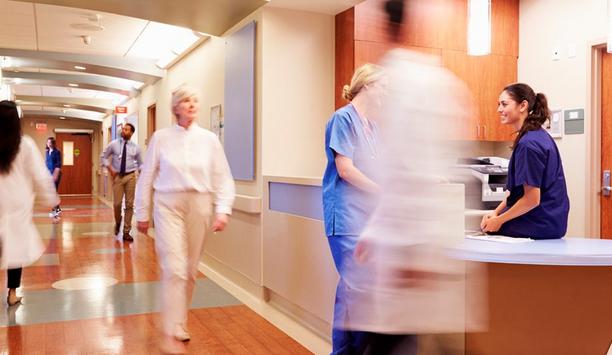
Creating a secure and positive healthcare experience
Download
Integrated access control: reap the benefits of connected security
Download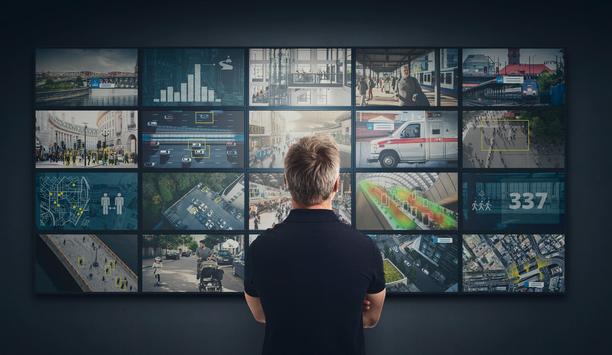
Connected video technology for safe cities
Download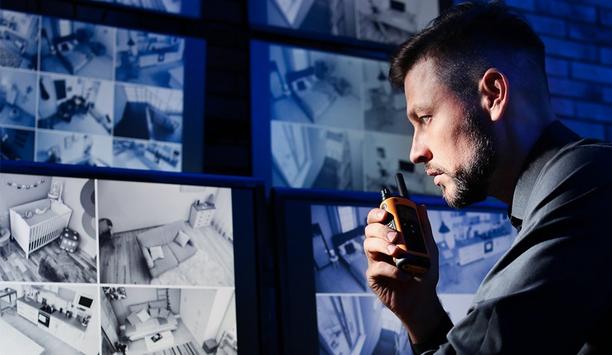
10 step guide to staying ahead of emerging security threats
Download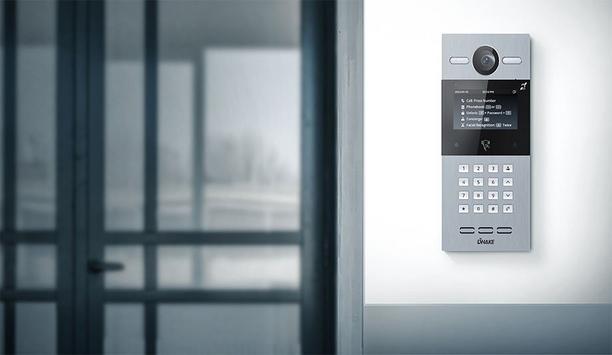
A step-by-step checklist for choosing an intercom system
Download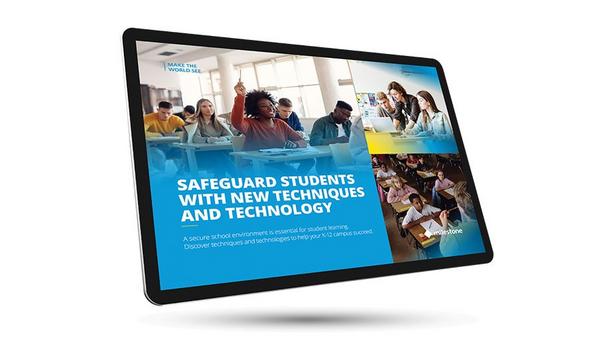
Safeguard Students With New Techniques And Technology
Download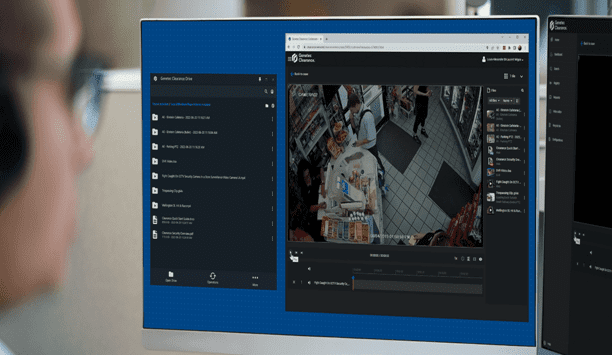
How to implement a physical security strategy with privacy in mind
Download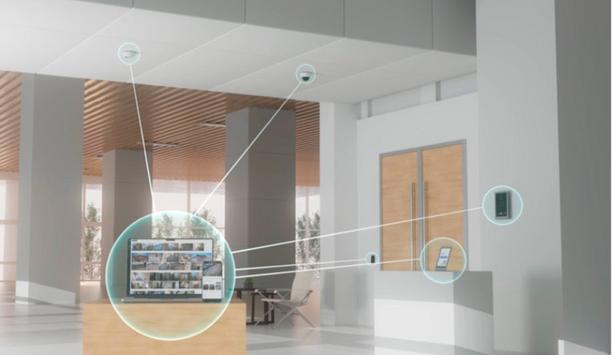
5 ways to strengthen physical security with an integrated system
Download
The benefits of Edge AI + Cloud for security systems
Download
Creating a secure and positive healthcare experience
Download
Integrated access control: reap the benefits of connected security
Download
Connected video technology for safe cities
Download
10 step guide to staying ahead of emerging security threats
Download
A step-by-step checklist for choosing an intercom system
Download
Safeguard Students With New Techniques And Technology
Download
How to implement a physical security strategy with privacy in mind
Download
5 ways to strengthen physical security with an integrated system
Download
The benefits of Edge AI + Cloud for security systems
Download

Videos
Security monitoring system: Manufacturers & Suppliers
- Dahua Technology Security monitoring system
- Vicon Security monitoring system
- Bolide Security monitoring system
- Hikvision Security monitoring system
- Seagate Security monitoring system
- BCDVideo Security monitoring system
- Pelco Security monitoring system
- LILIN Security monitoring system
- MobileView Security monitoring system
- Hanwha Vision Security monitoring system
- AV Costar Security monitoring system
- Vanderbilt Security monitoring system
- TESA Security monitoring system
- CEM Security monitoring system
- VIVOTEK Security monitoring system
- Sony Security monitoring system
- DSC Security monitoring system
- OPTEX Security monitoring system
- Parabit Security monitoring system
- MOBOTIX Security monitoring system

Using artificial intelligence (AI) to automate physical security systems
Download
A modern guide to data loss prevention
Download
7 proven solutions for law enforcement key control and asset management
Download
The truth behind 9 mobile access myths
Download
Access control system planning phase 2
Download



